April 23, 2023
Martha O'Kennon
The Summery weather of the preceding week reversed itself a bit this week. We started off with some night temps in the 30's F, but gradually we worked up to near 70 on April 21. Here you see a patch of Grape Hyacinths; a Pulmonaria scene and the flowers up high in a tree in the Weed Patch to the north of the house.
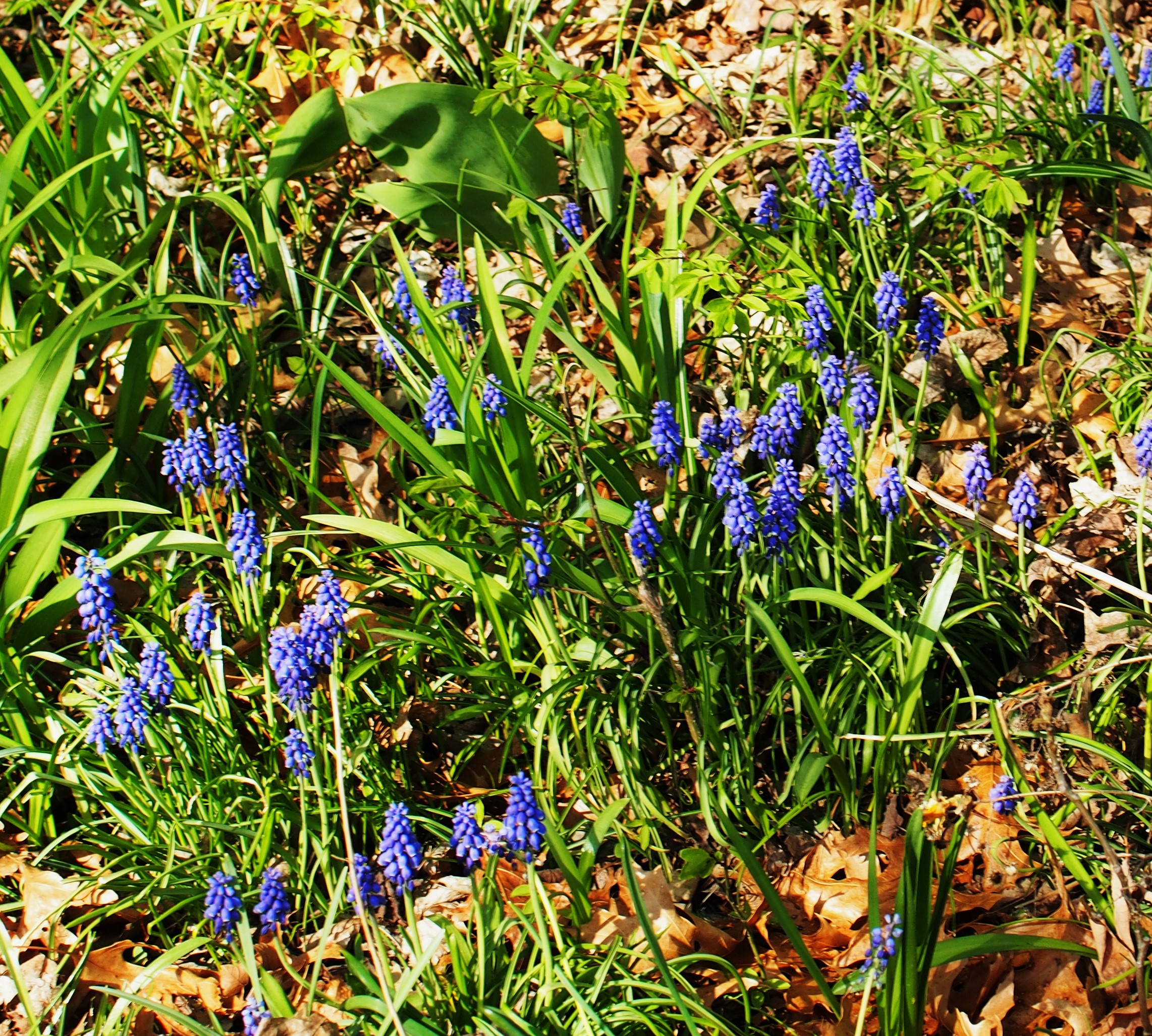
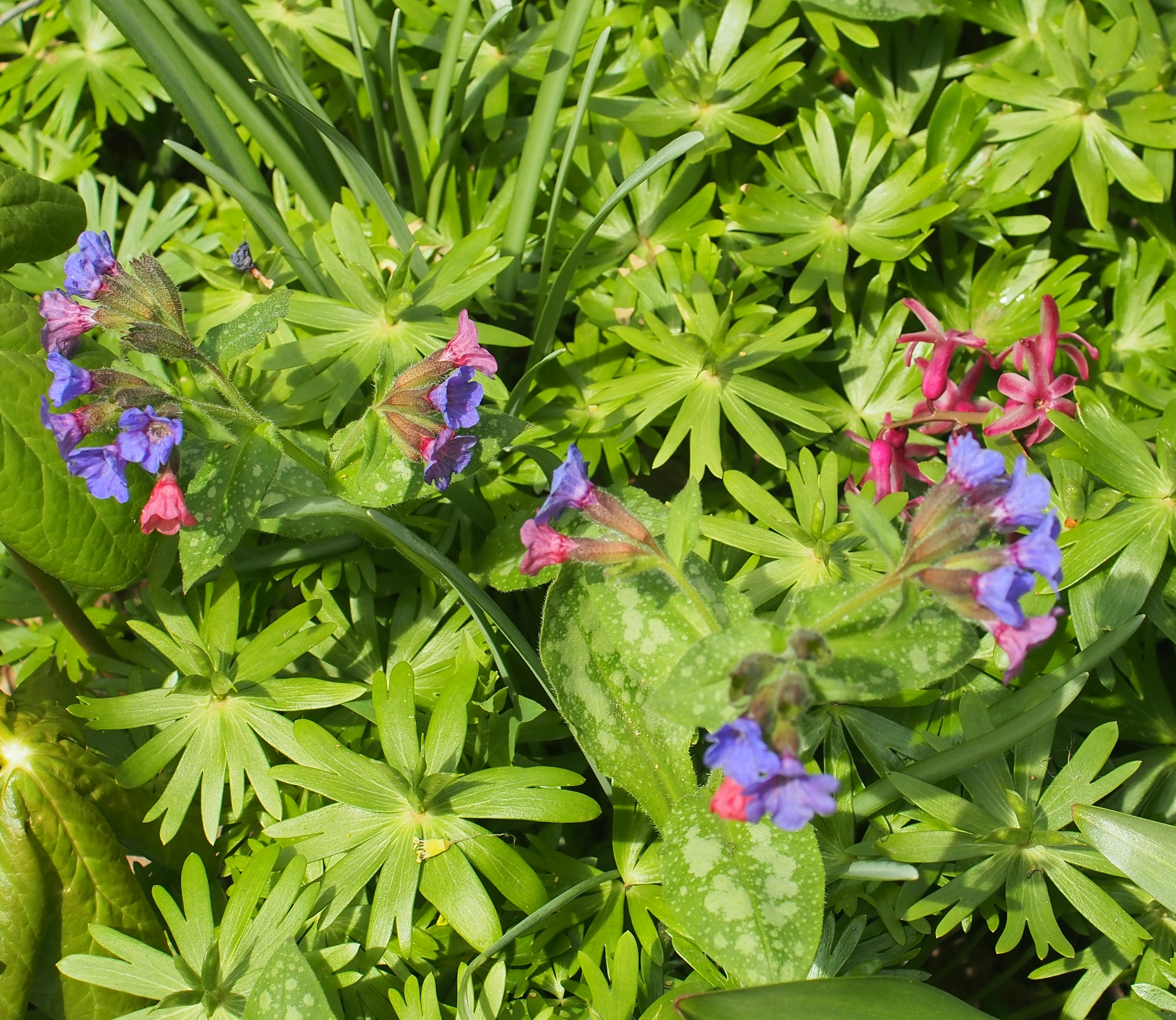
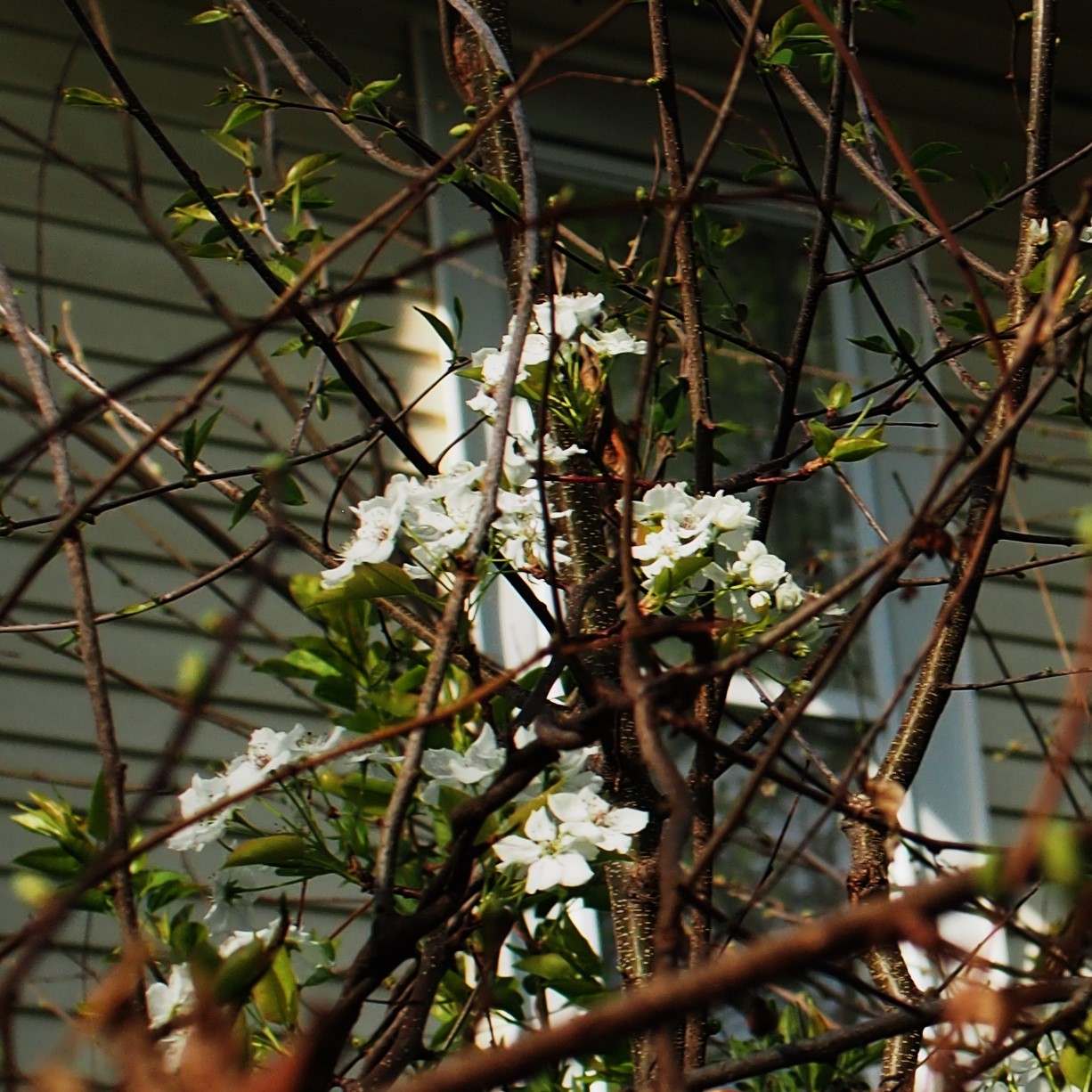
Remember that there is information in the name of the file for each image. You can see it by mousing over the image - look at the lower left of the screen. Or you can click again on the image to get to the (usually) larger image. Then the info is displayed in the address line above. Sometimes the second click will actually display a different view of the original image.
Here, not, here, not... This has been the pattern with the Winter Ants for several weeks now. Last week they were absent, but this week here they are back in the picture! Somehow their postures always remind me of the stance of our curious Grey Squirrels! They always look so curious and watchful!
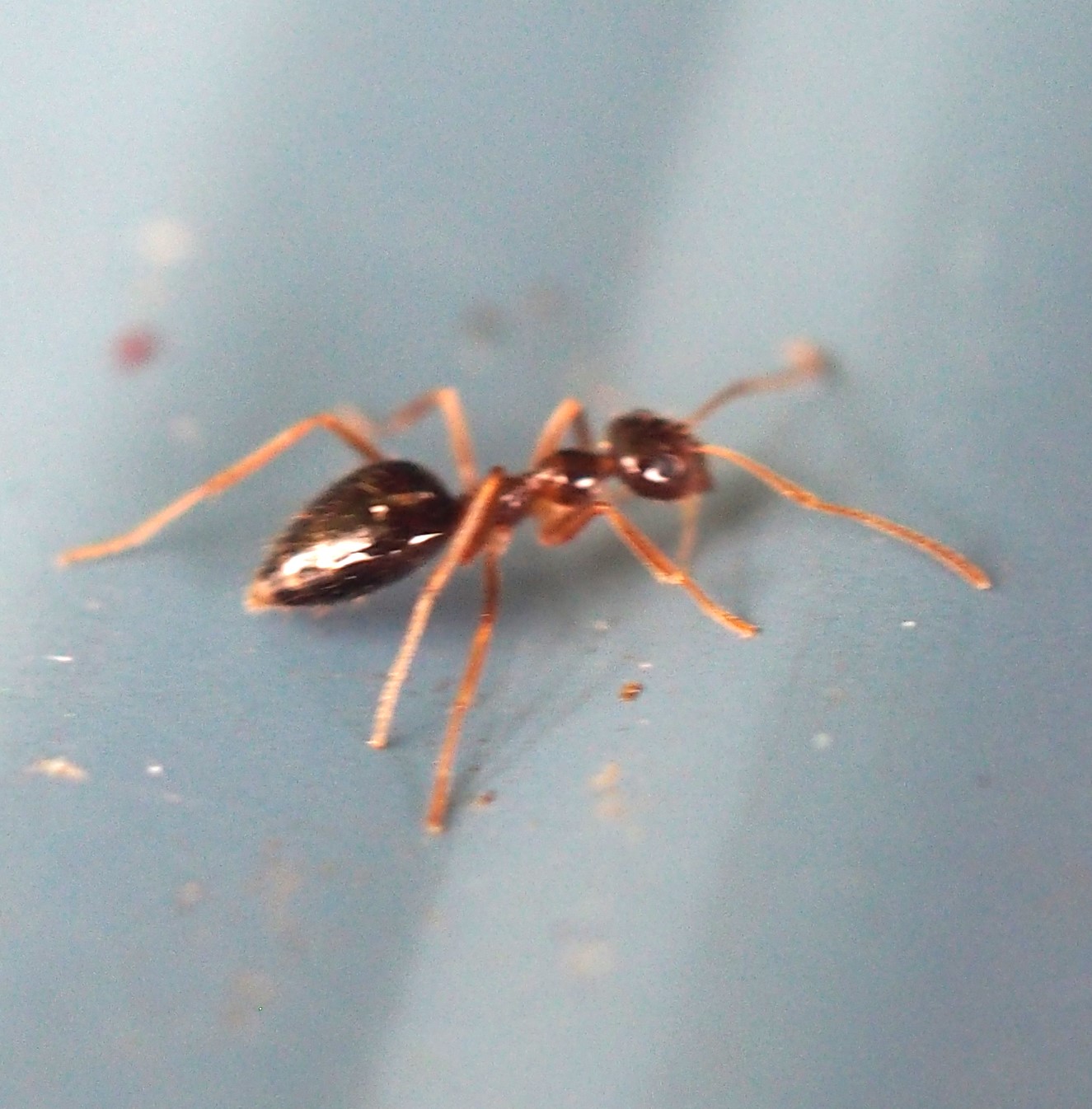
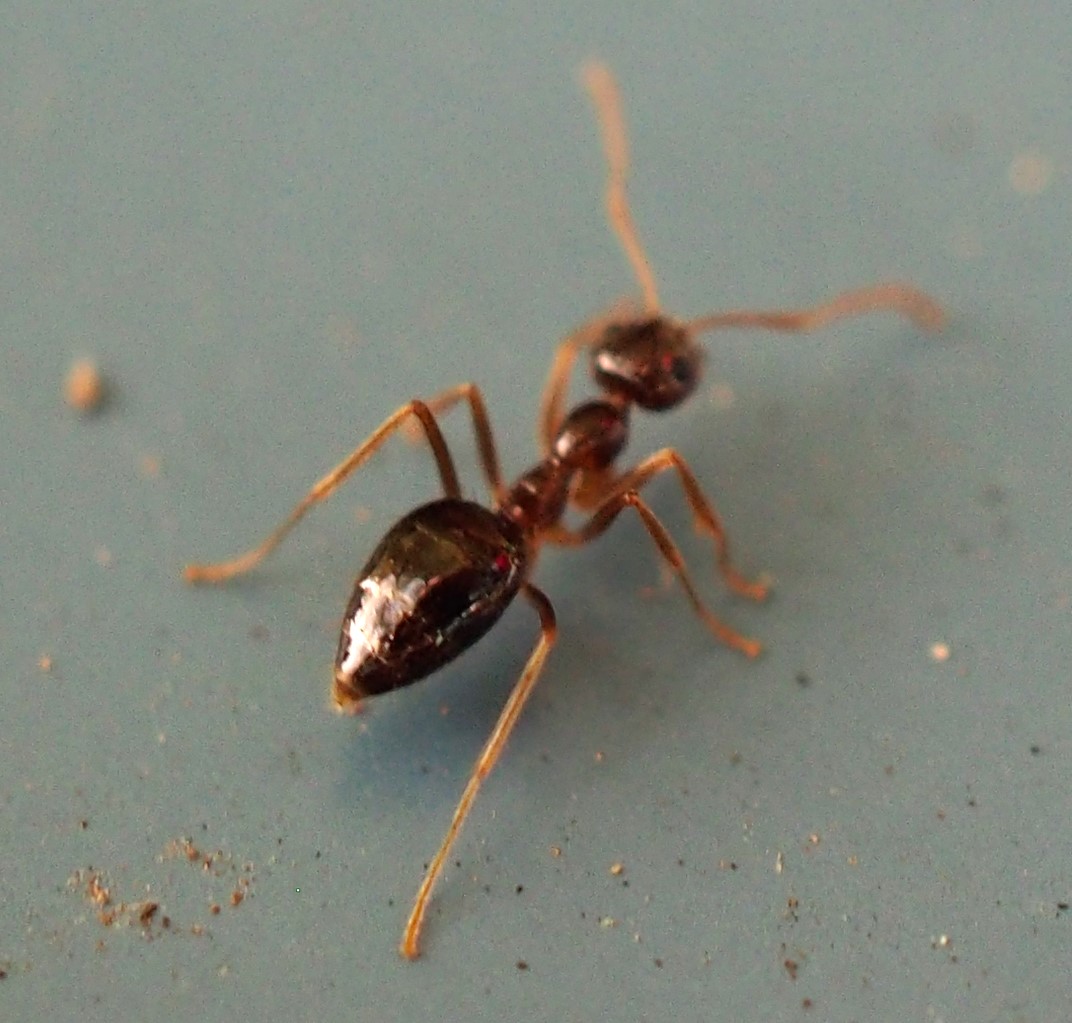
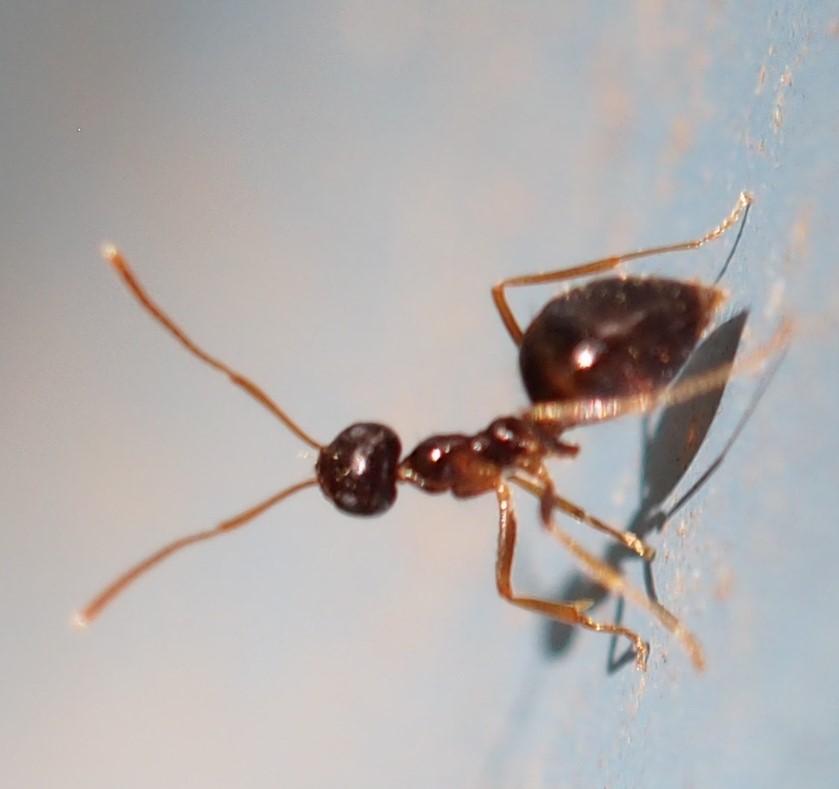
Next we see an Eastern Black Carpenter Ant. We'll be seeing more of them as Summer approaches. The Nearctic Carpenter Ant is here too (pictures 2 and 3). Notice the Black Carpenter and Nearctic Ants are members of the same genus.
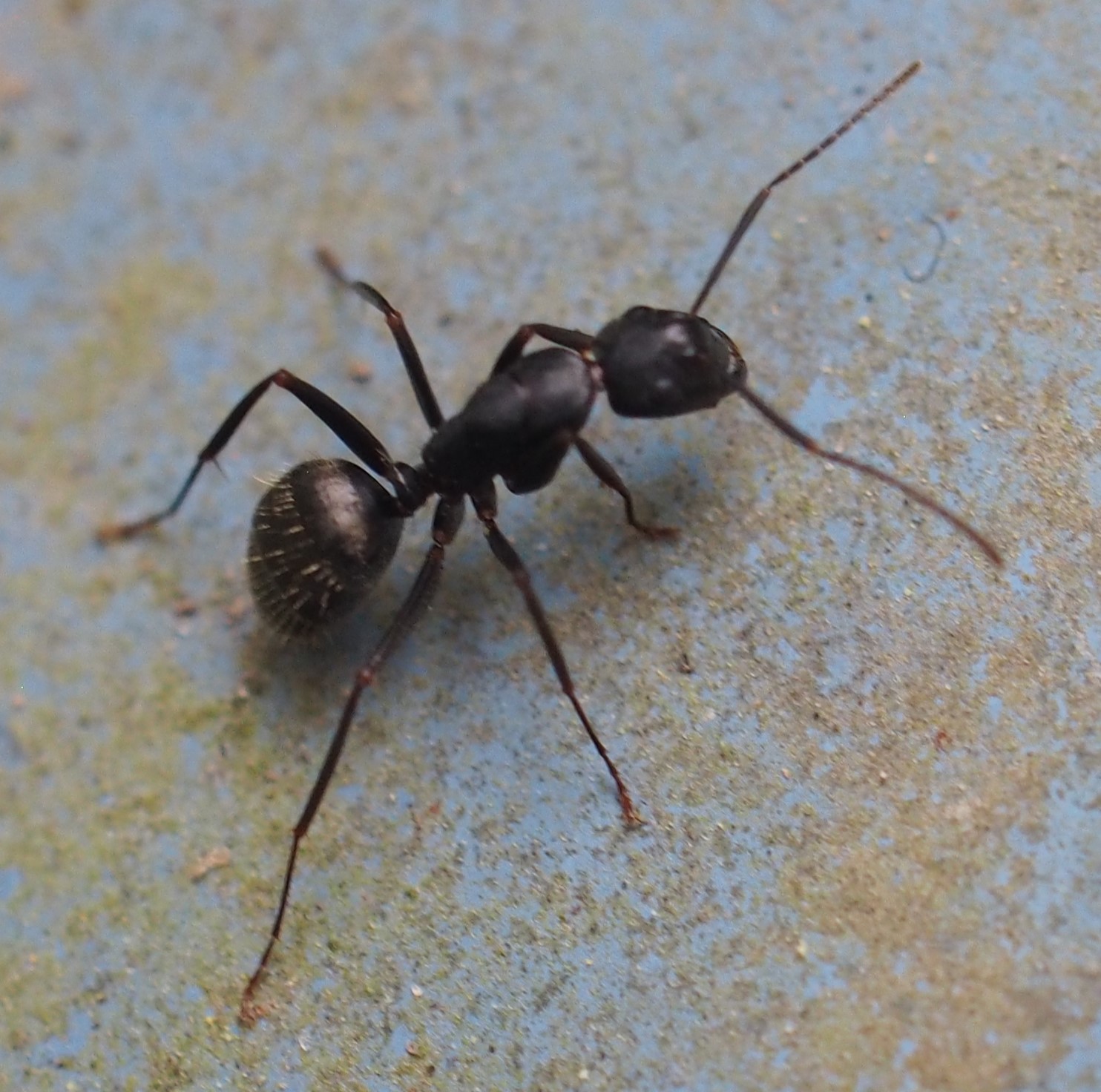


Maybe it's a function of the time of year, but the members of the genus Crematogaster are more prevalent now too. One feature they share is a heart-shaped gaster (rear segment). Pictures 1 and 2 are of the same individual, Crematogaster cerasi. The third is a different one, where the top view shows off the heart shape. It is another member of genus Crematogaster. @arman_ , who identified the first Ant, said the red color helped in developing that ID. Obviously the direction of light into pictures 1 and 2 influenced the color of one of them more than the other. Number 3 is almost surely not in the same species.
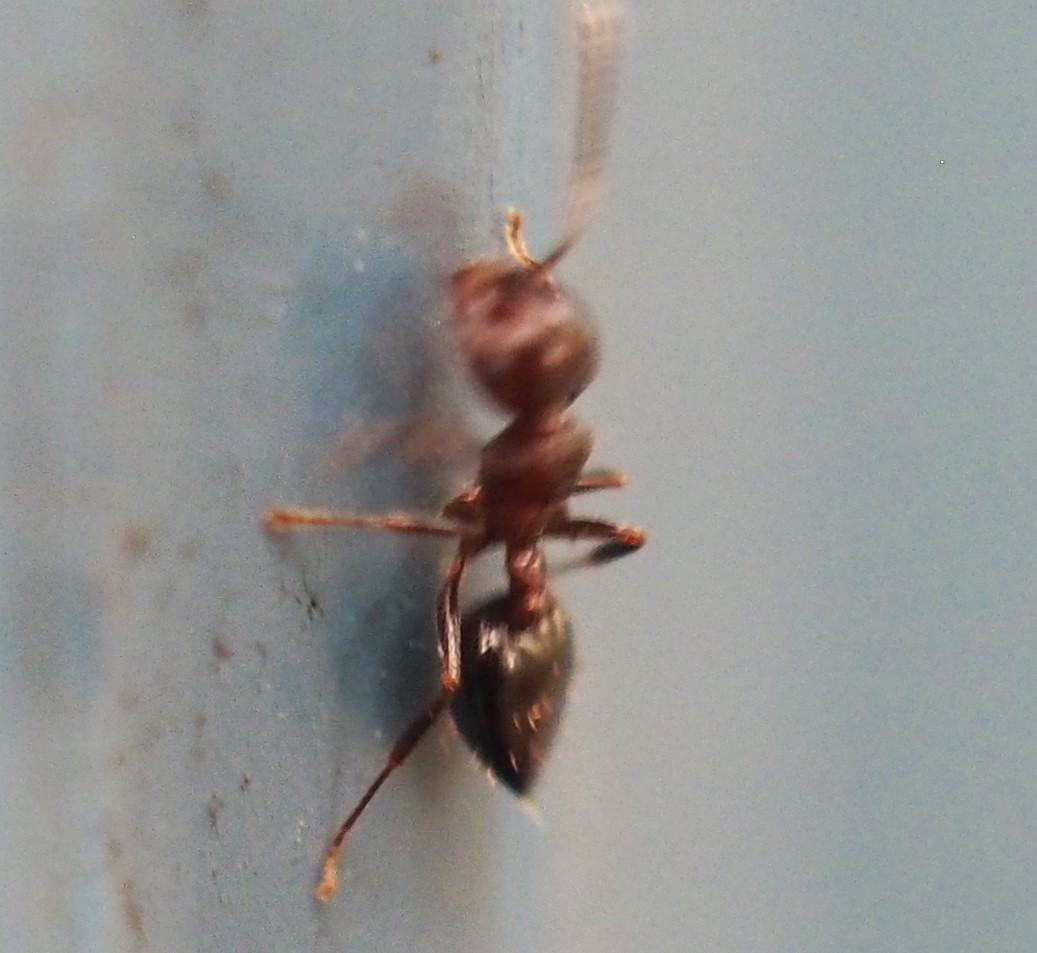
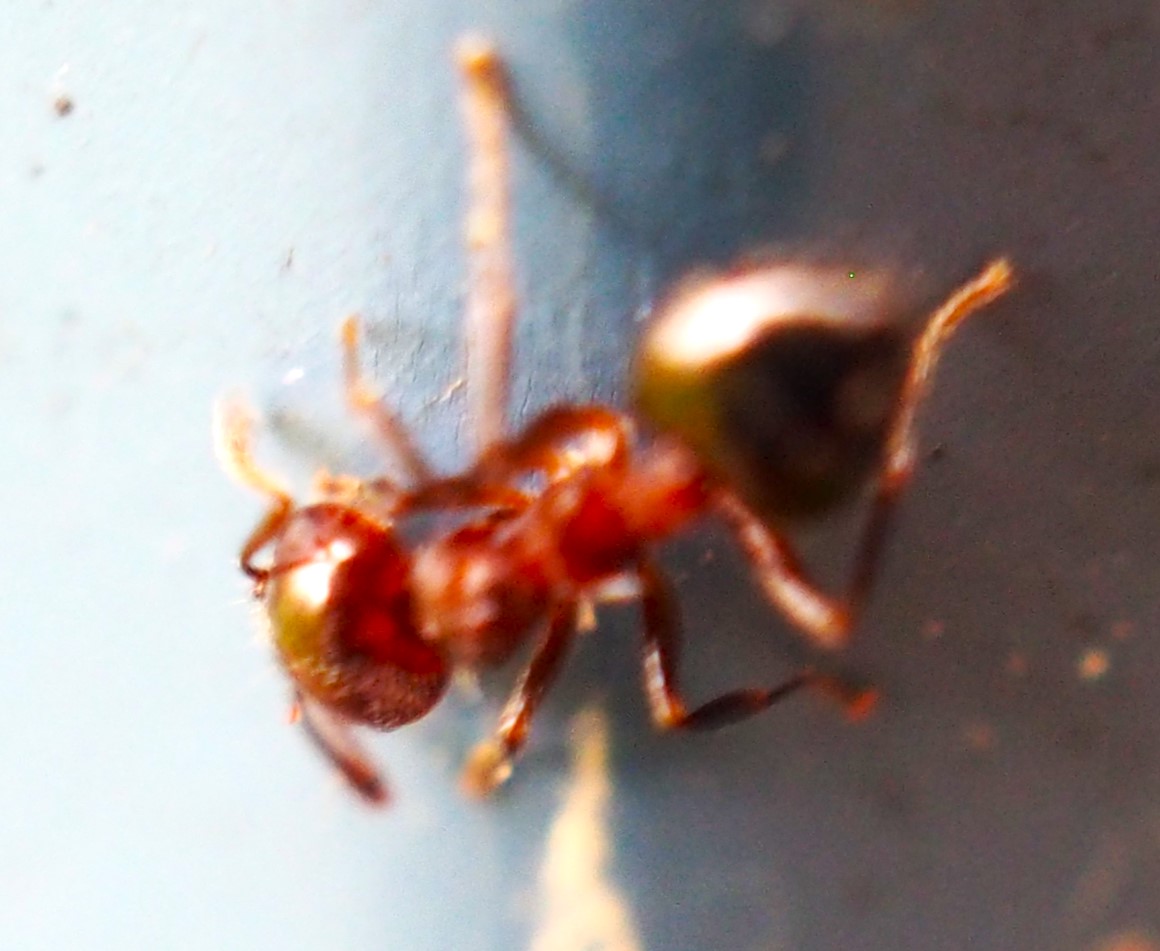
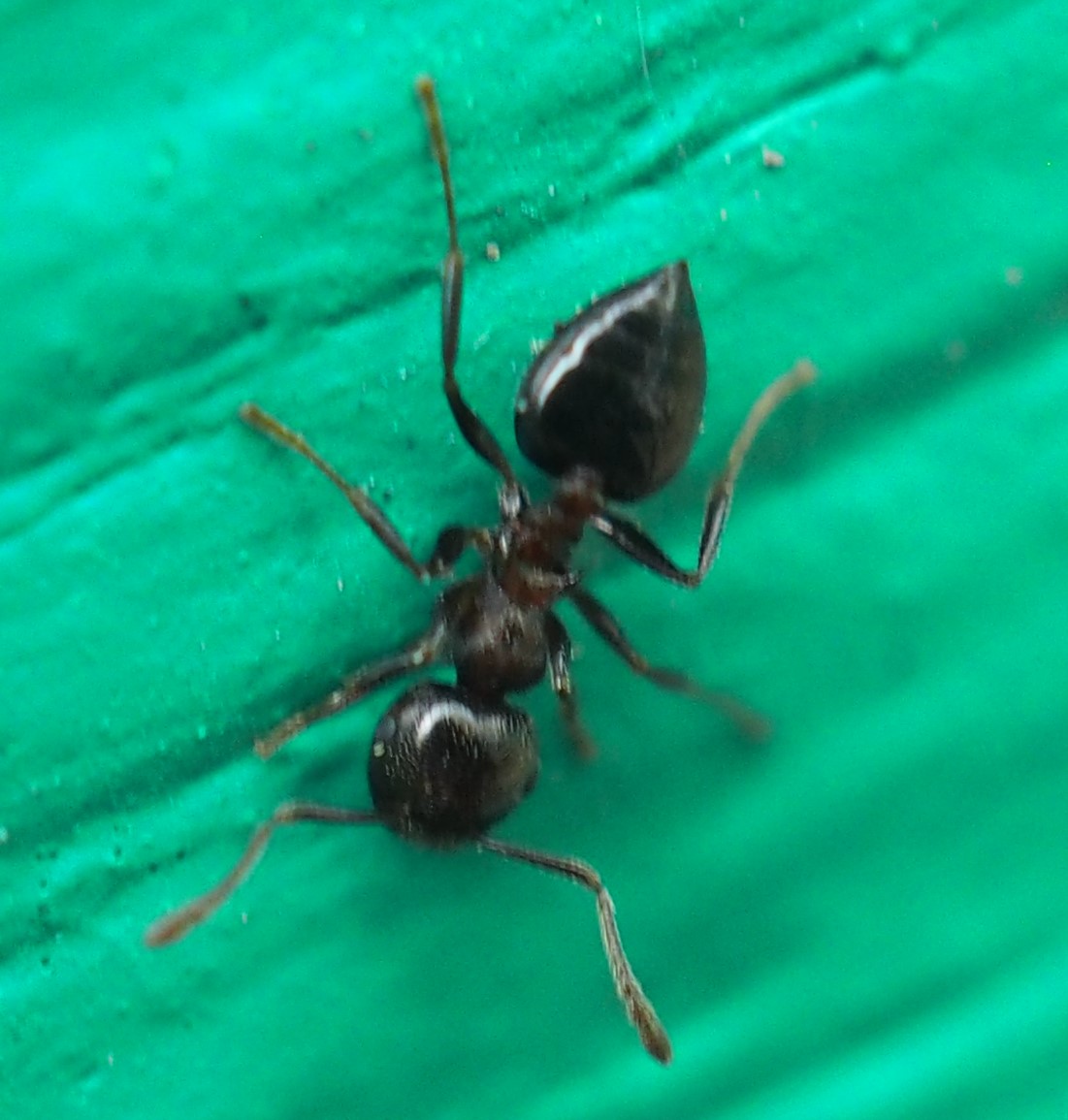
The Beetles were an interesting lot this week. Here is a little Brown Beetle. Beetles are such a big group that there must be a plethora of Brown ones. Then there was this other little Beetle, this one almost looking like a Picnic Beetle, but the shape of the individual orange spots is wrong. The third is once more a Redbud Seed Weevil, or Redbud Bruchid.

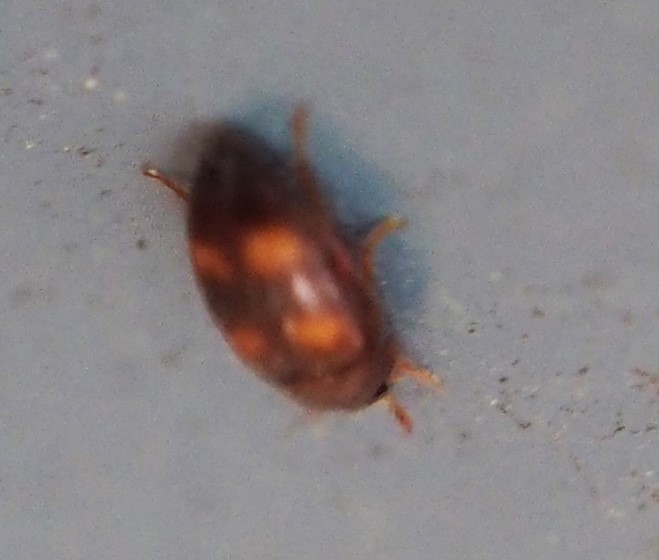
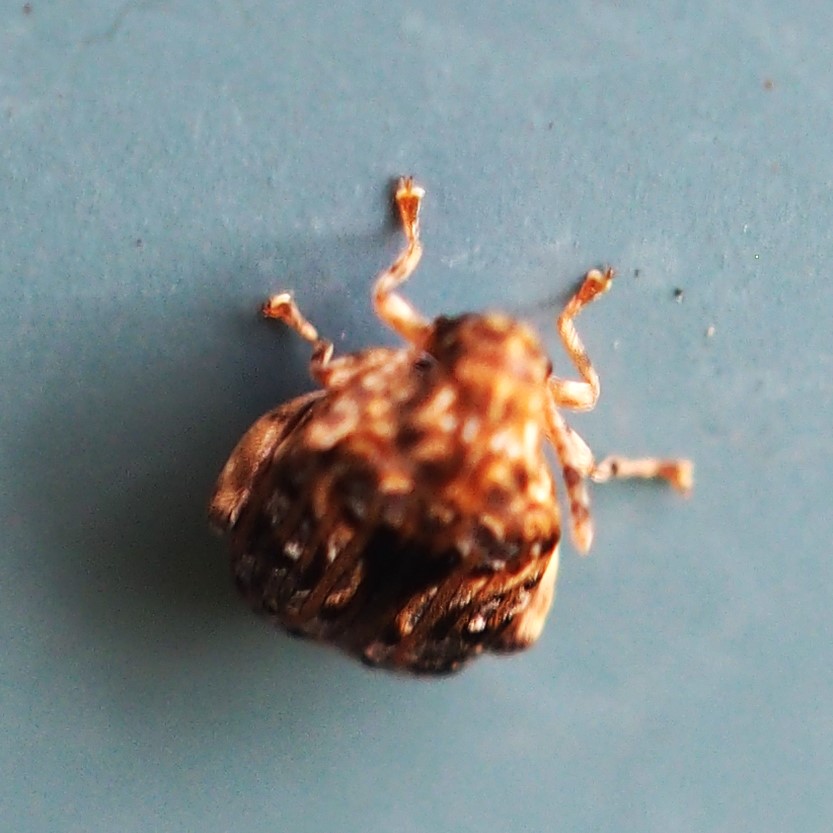
But the most exciting of all was the discovery that the Phyllotreta ochripes Beetles, which appeared last week, really did precede the mating scene that I found on the back of a couple of Garlic Mustard leaves. Here are two such mating scenes.
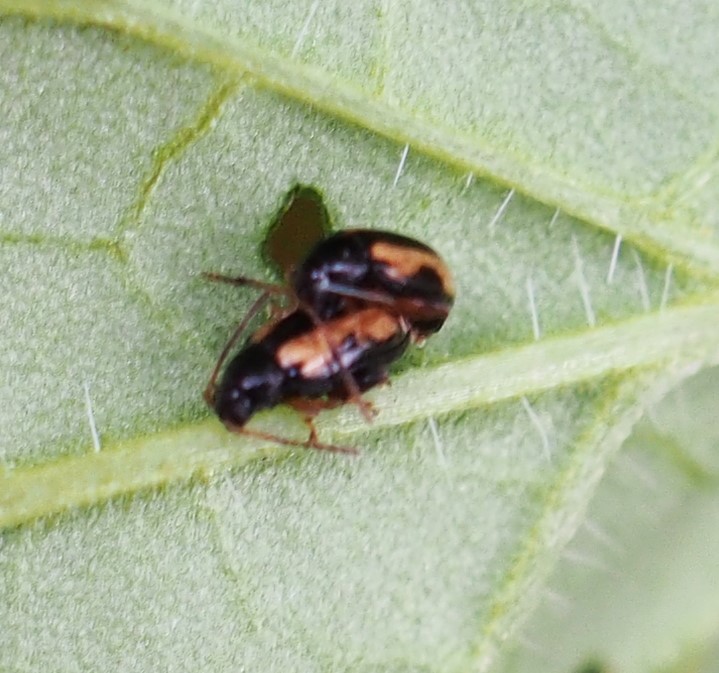
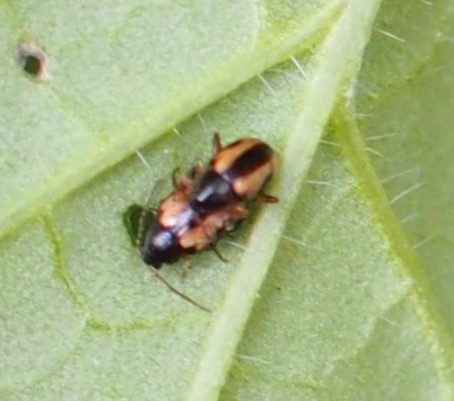
Last week we had all sorts of Bugs with ties to Assassinhood. Not this week. The stars of this week's show were Leafhoppers, unlike recent weeks. These three appear to be members of genus Eratoneura.
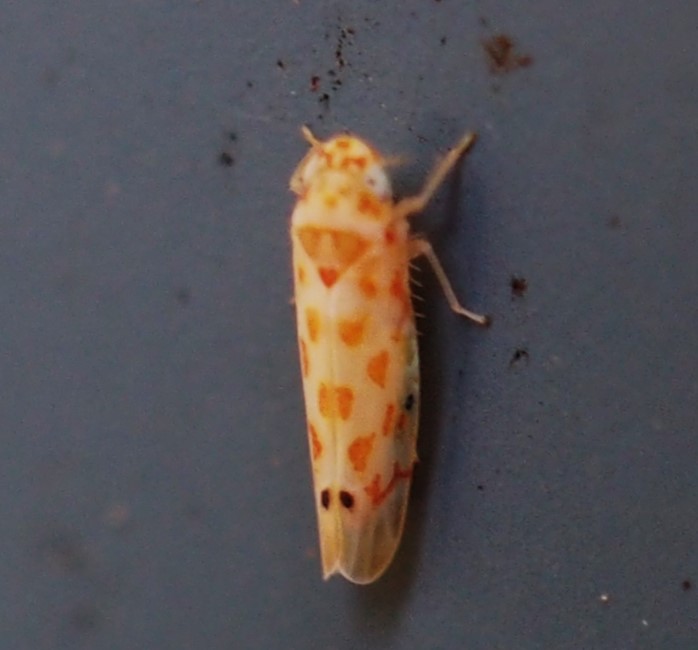
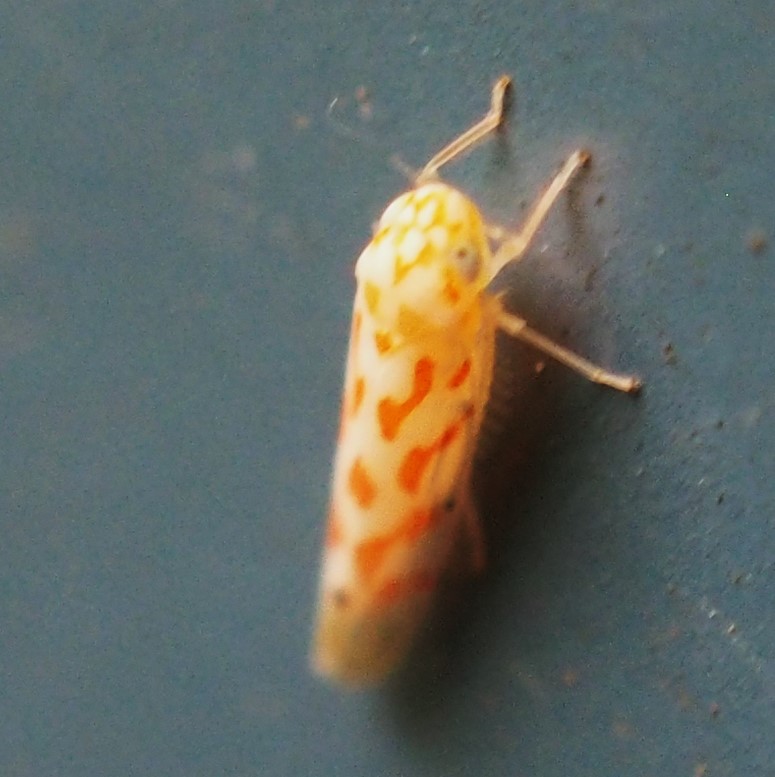
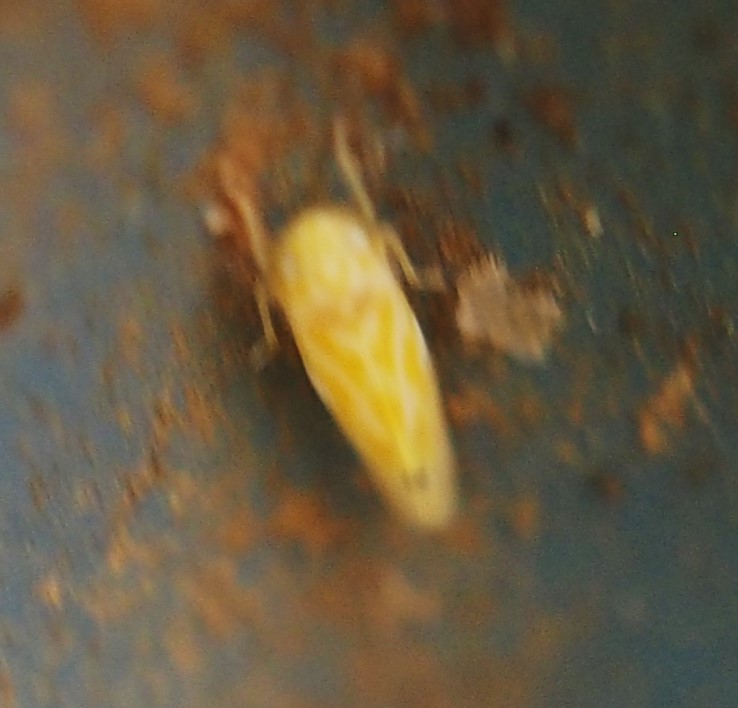
Here's another member of Eratoneura. It is called Eratoneura ardens because of the dark brown "collar". All you linguophiles, "ardent" can mean "burning", right? To support this diagnosis, here is another picture from August 25, 2022.
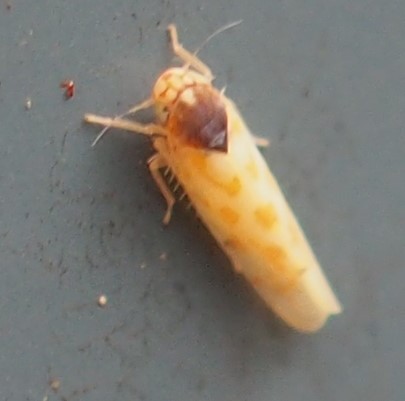
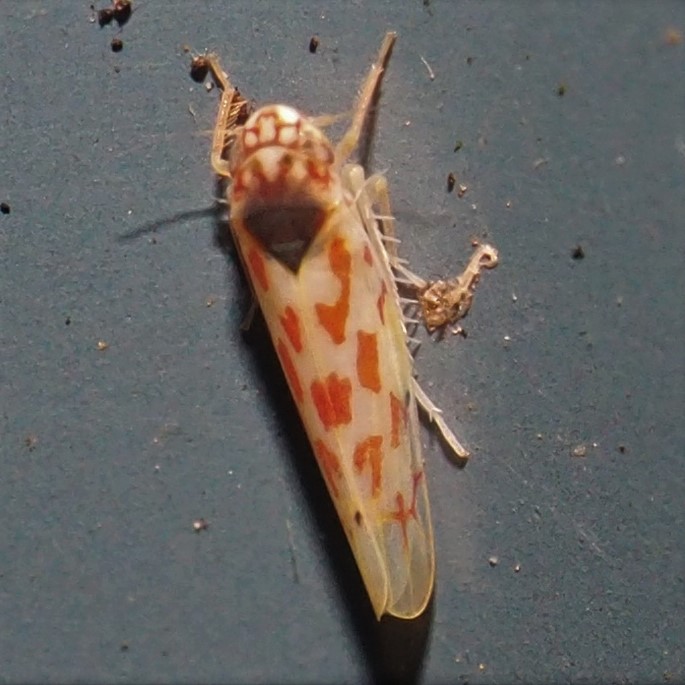
The genus Erythridula was also represented again this week. Here are a couple of variations on a theme. But this afternoon we also found Erasmoneura vulnerata.
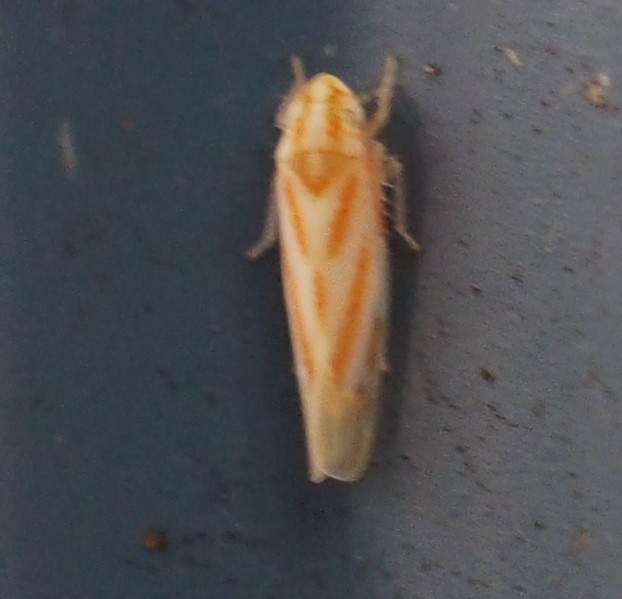


Here is a little Bug from the 19th. It appears to be a Birch Catkin Bug. Since I don't have any Birches, I'll need to try to find some in the neighborhood. But I had one several years ago (picture 3), and there seems to be some resemblance, especially the triangular area on the thorax of the older picture.
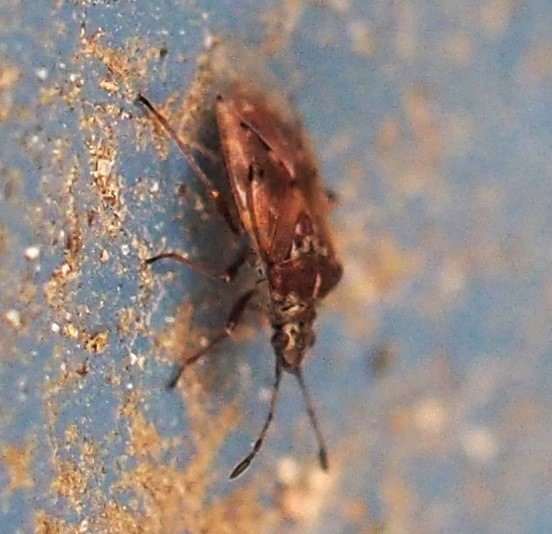

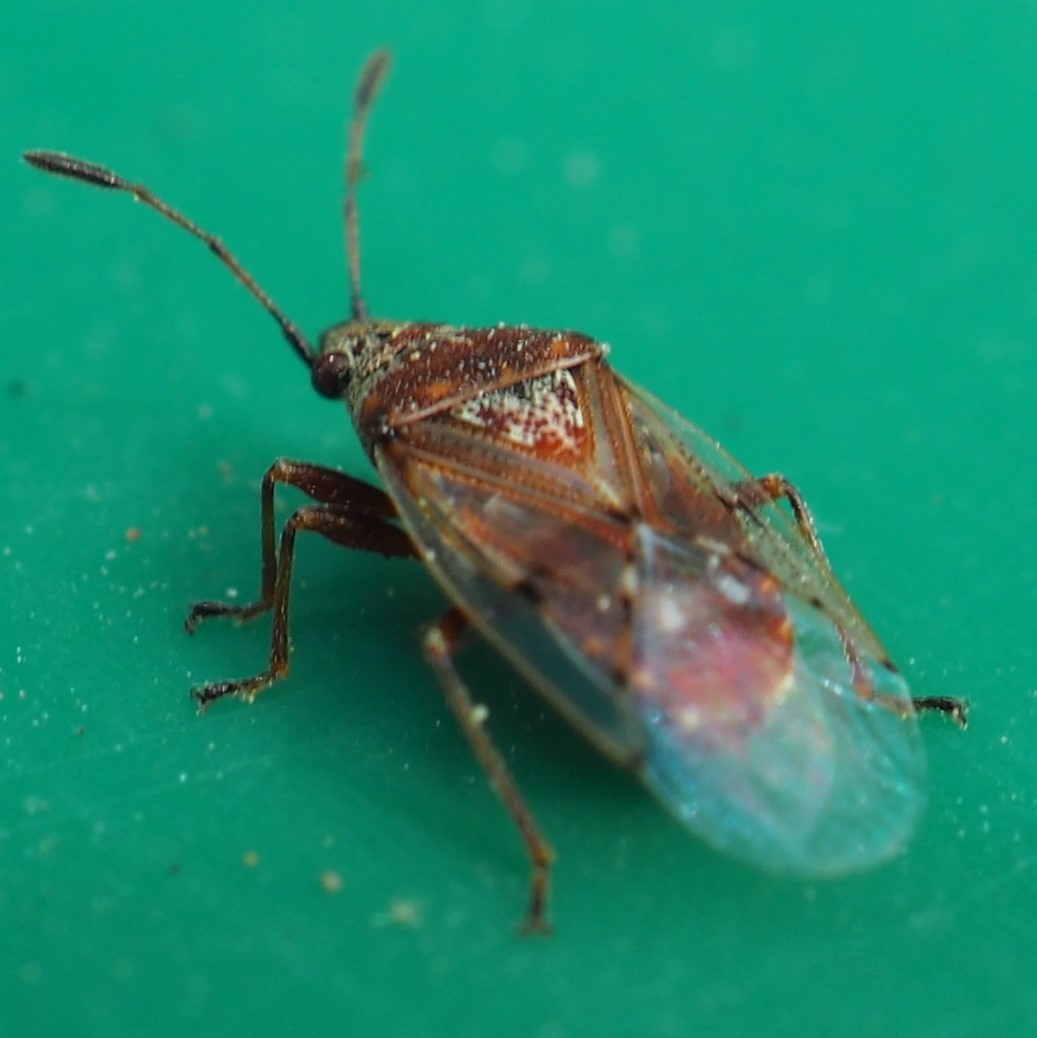
Now let's look at what the Barklice have to show for themselves. Here is that nest, which seems to be taking a very long time to develop. Next is a set of Barklouse eggs. Be patient, I feel there will be some activity just around the corner in this set of creatures.
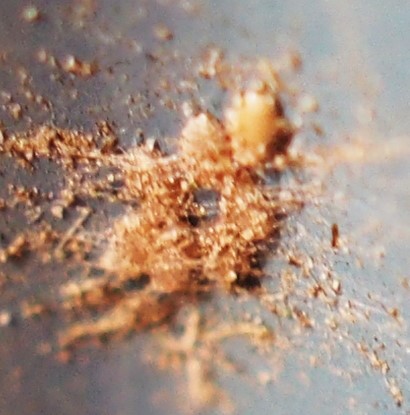
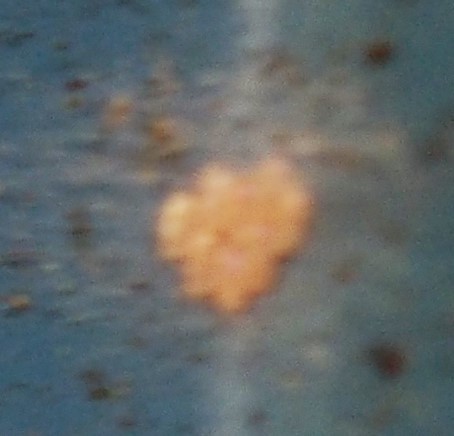
So on into the Flies! There are just so many of them and they keep inventing more kinds of themselves! This week a swarm of Fungus Gnats arrived in such numbers. Most of them seemed wilder than other species had seemed. They've now been around for about 3-4 days.
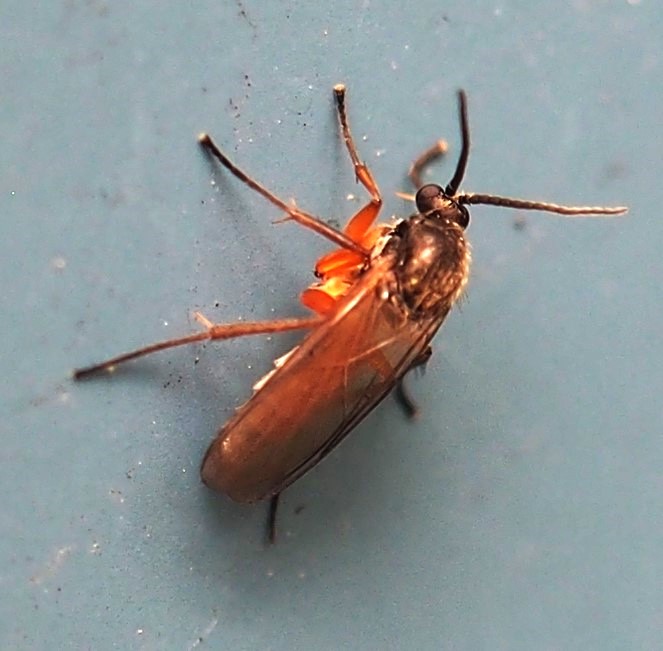
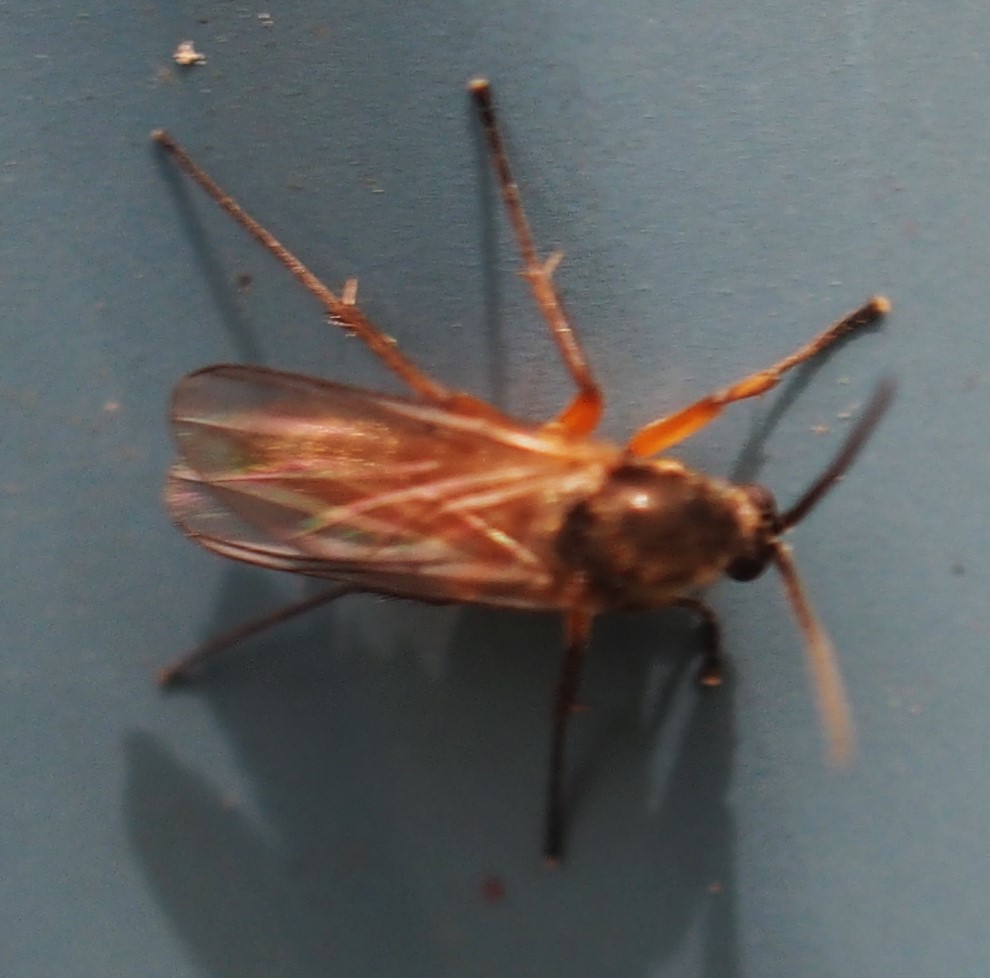
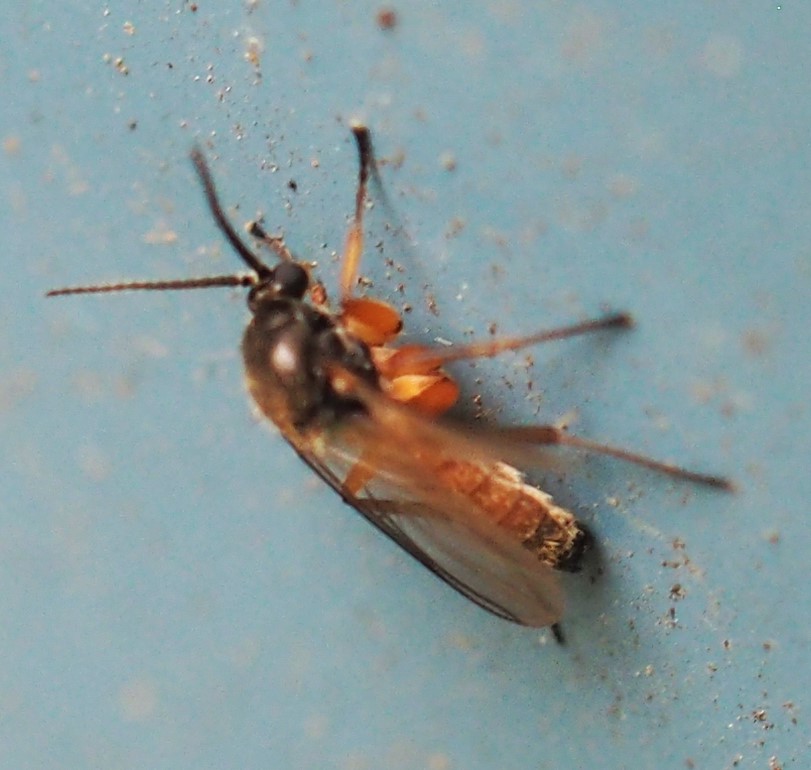
Here is an oldish friend. It's Asteia beata, the first Fly in which the ability of the physical lens-structure of its wings to produce colors similar to iridescence. Picture 2 is the very picture that was my first experience of this property called Wing Interference Patterns or WIP.
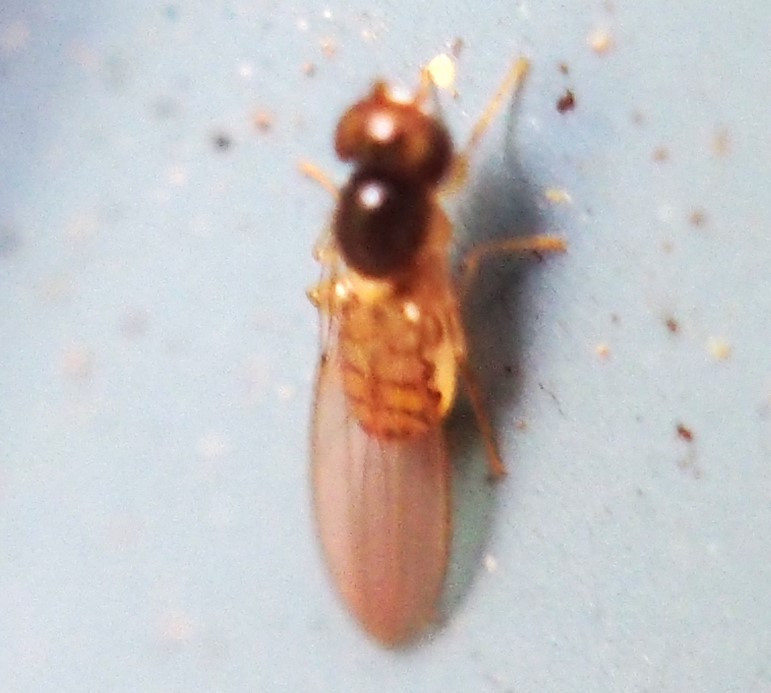
 .
.
Here are some of the many Midges we saw this week. There are so very many, but these were the ones that really caught my eye. The middle one is one that looks so much like a Mosquito without a piercing proboscis. But the two gorgeous green ones (now you know one of my weaknesses)! I had never seen one like number 1 (a member of tribe Chironomini), but last summer I saw quite a few in the tribe (Tanytarsini) with those stunning green! It seems you don't need to be green to be in that tribe, but a large number of the Midges in Tanytarsini are green!
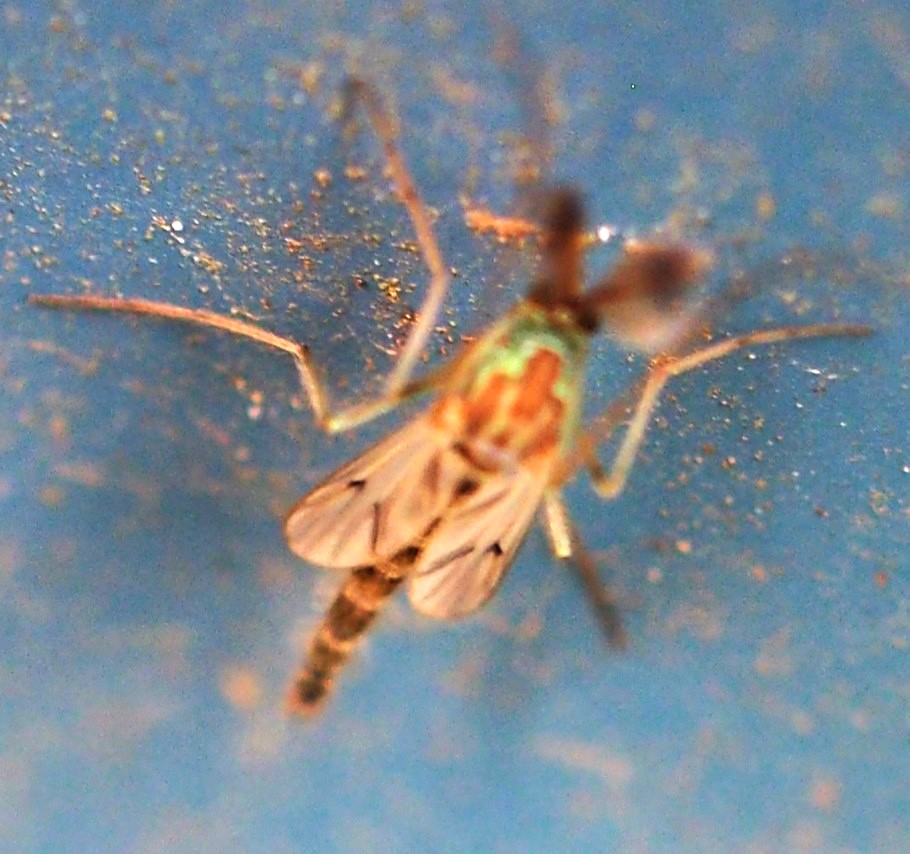

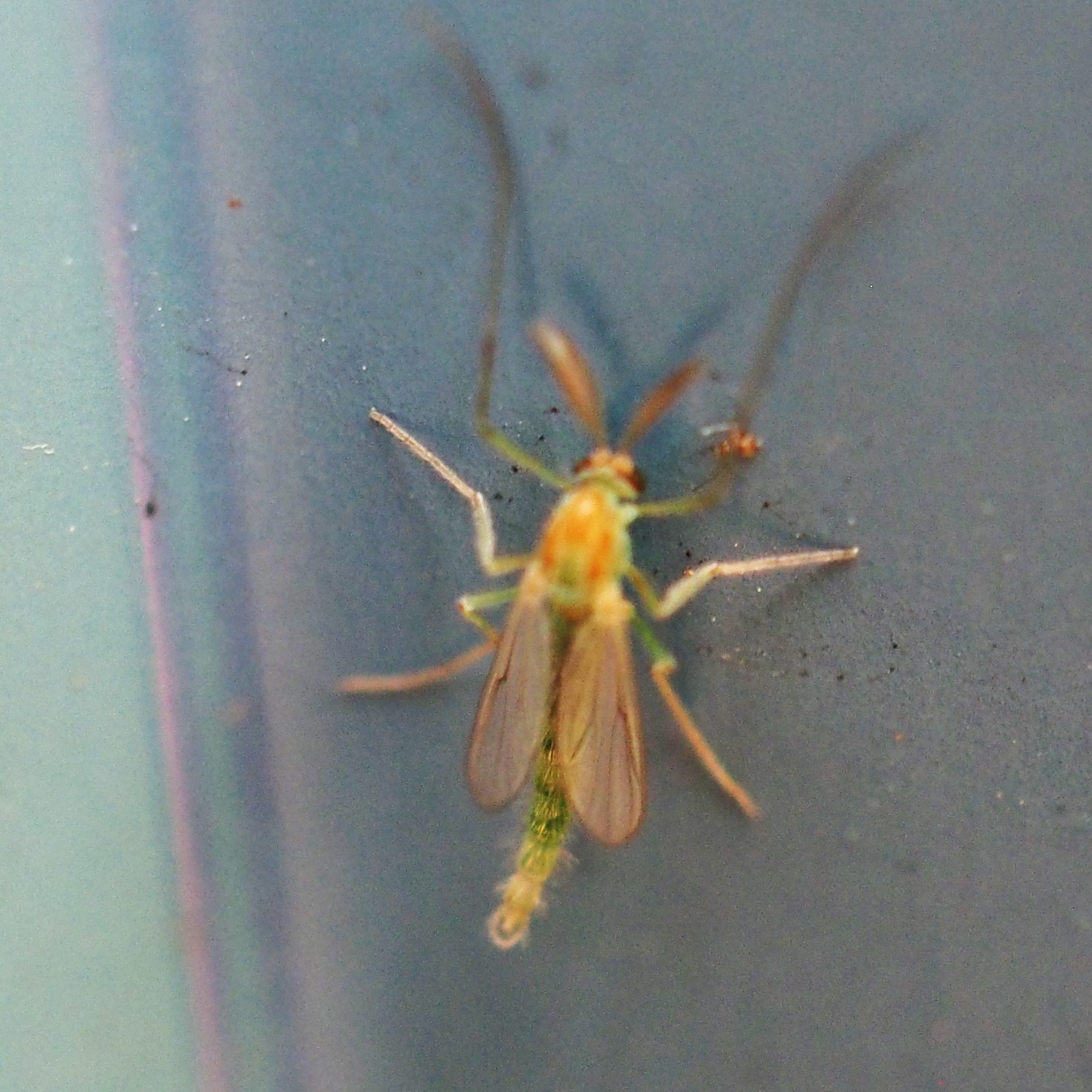
There is a classification for the Flies that look like what we think of when we think of Houseflies - they are called Brachyceran Flies. The second one here has a healthy sheen of WIP too. Number 3 was sitting on top of our beautiful green Albion Garbage Cans.
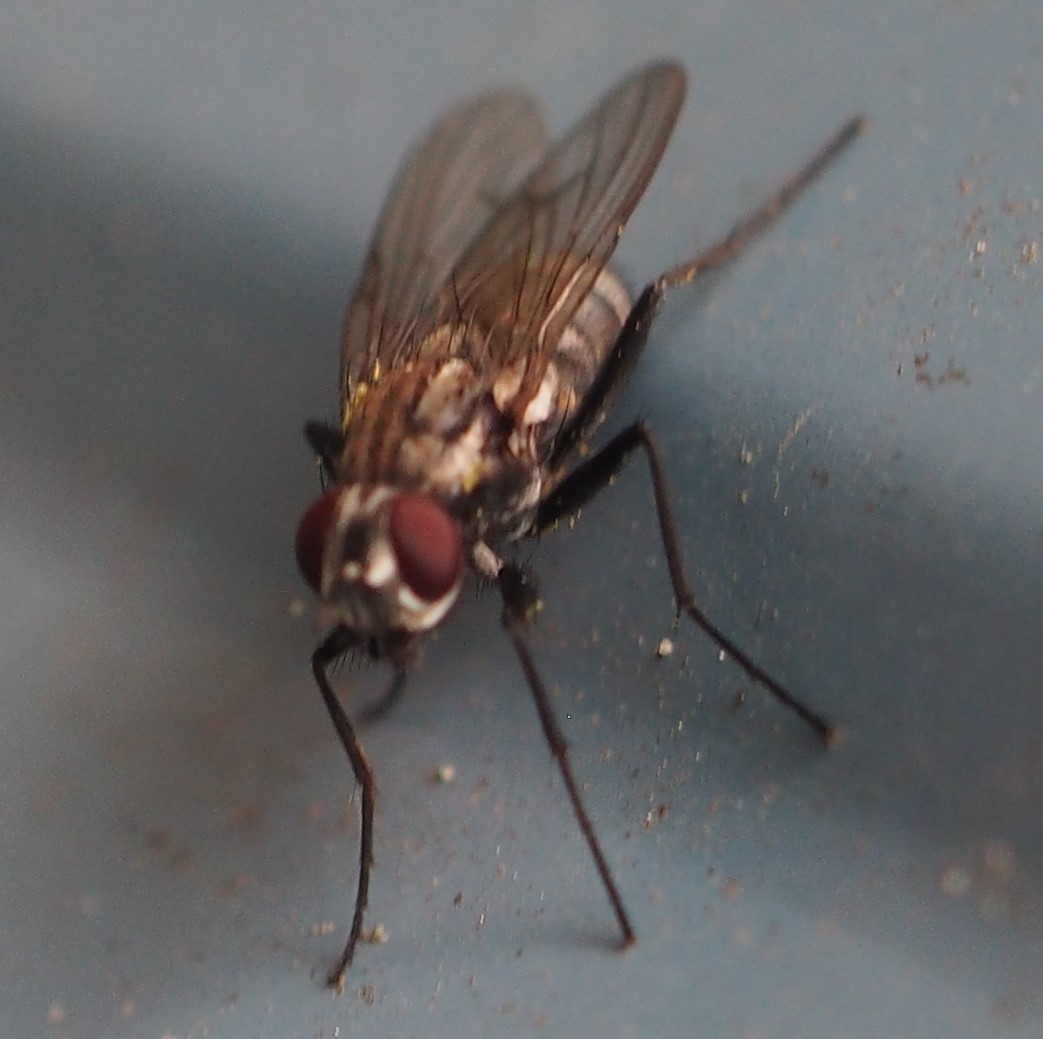


Here's one I'm almost sure is in genus Scaptomyza. Next is our old friend Suillia quinquepunctata. Third is a Dung Fly.
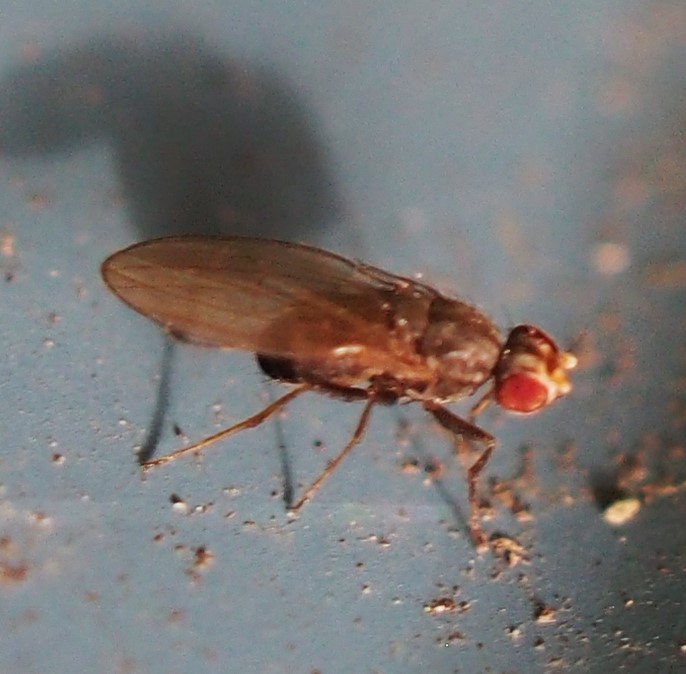

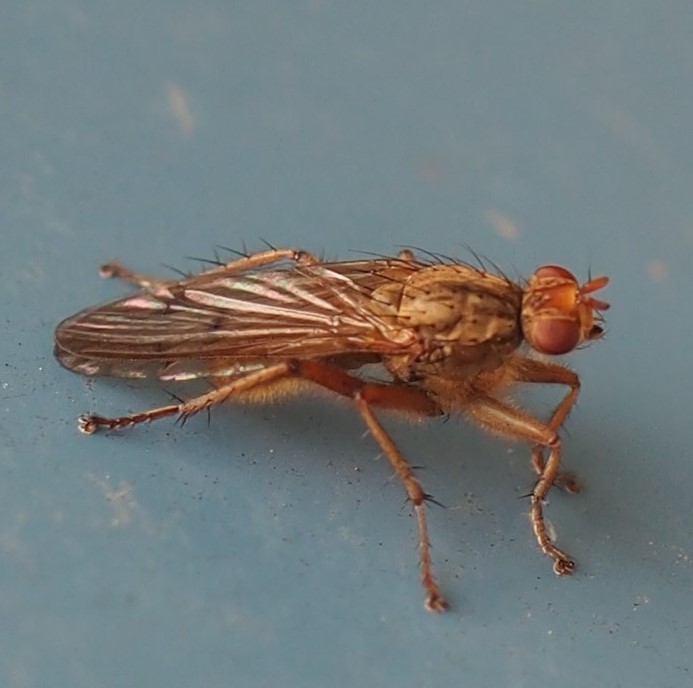
Here is a Gnat (a kind of Fly). I don't know what the second one is, but it seems to be laying eggs. The last one is another unknown (to me). Fourth is a Hoverfly, Helophilus
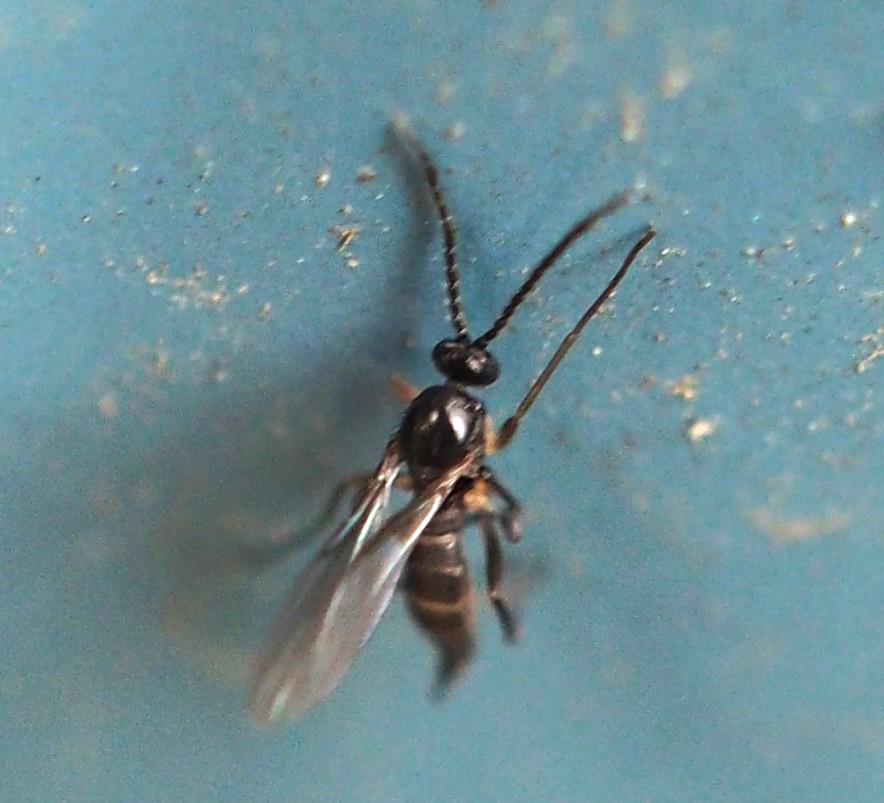
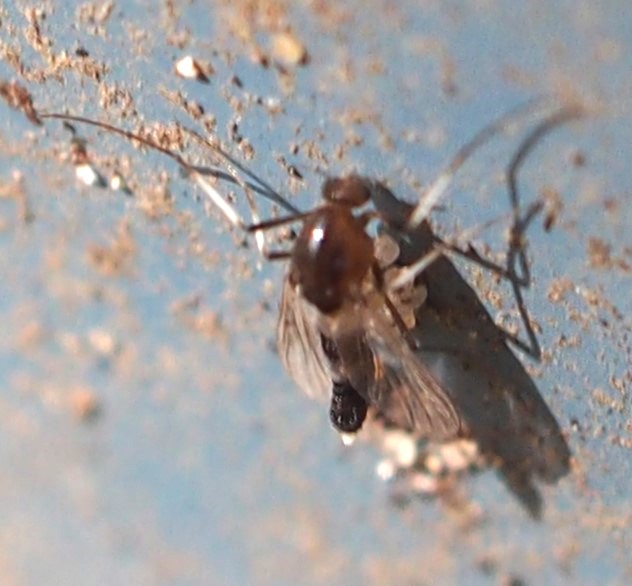
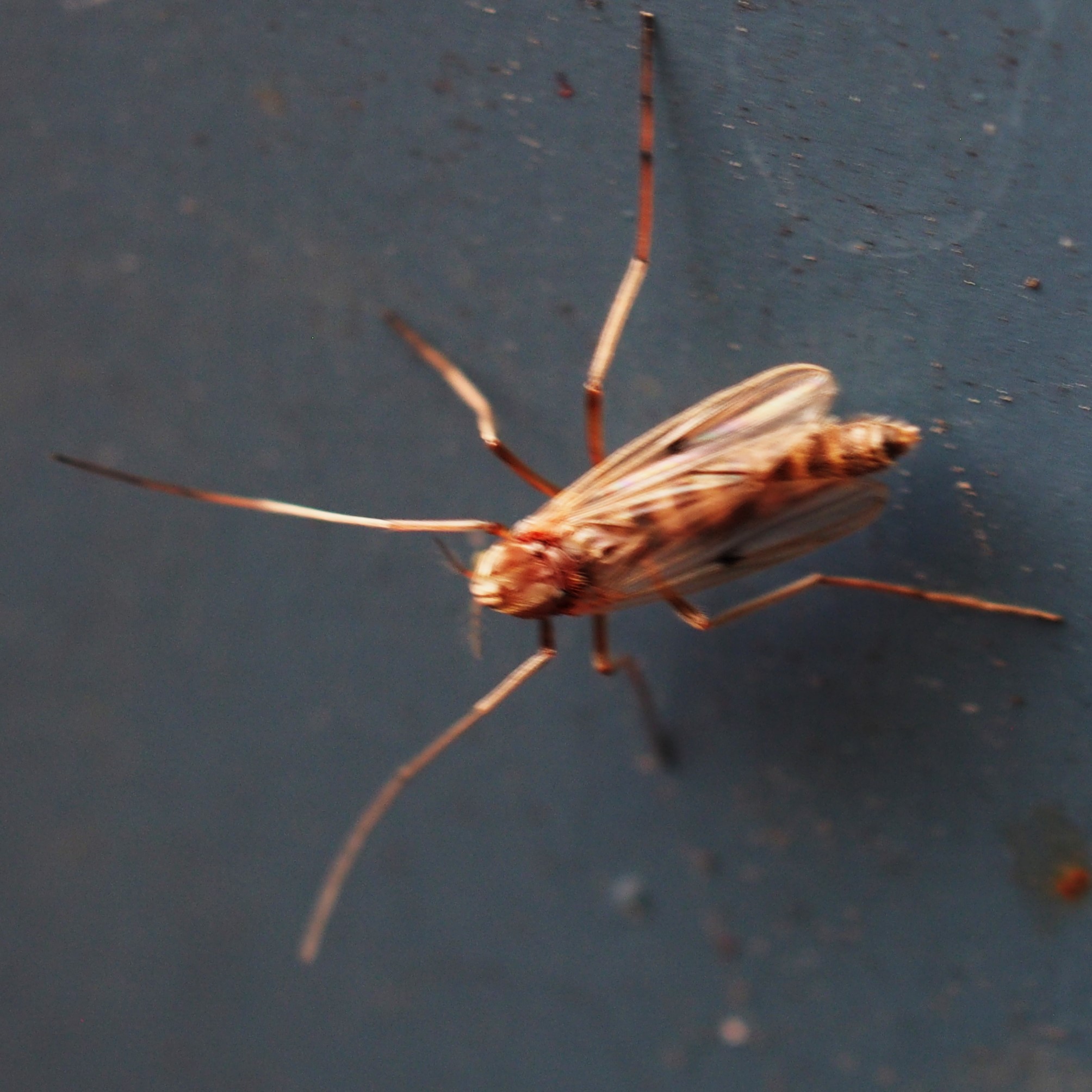
Here's a reward for wading through so many Flies! Not a Winter Crane Fly, but a real Crane Fly! When I saw the third one right where the first two had been, I thought it was the same one, but it had gotten darker - but it has gotten itself something to snack on. In fact, so has the original in picture 2! Flash! It was identified by @keimwj on iNat as Tipula dorsimacula, one of the Large Crane Flies. I believe that means "spots down the back", which fits!
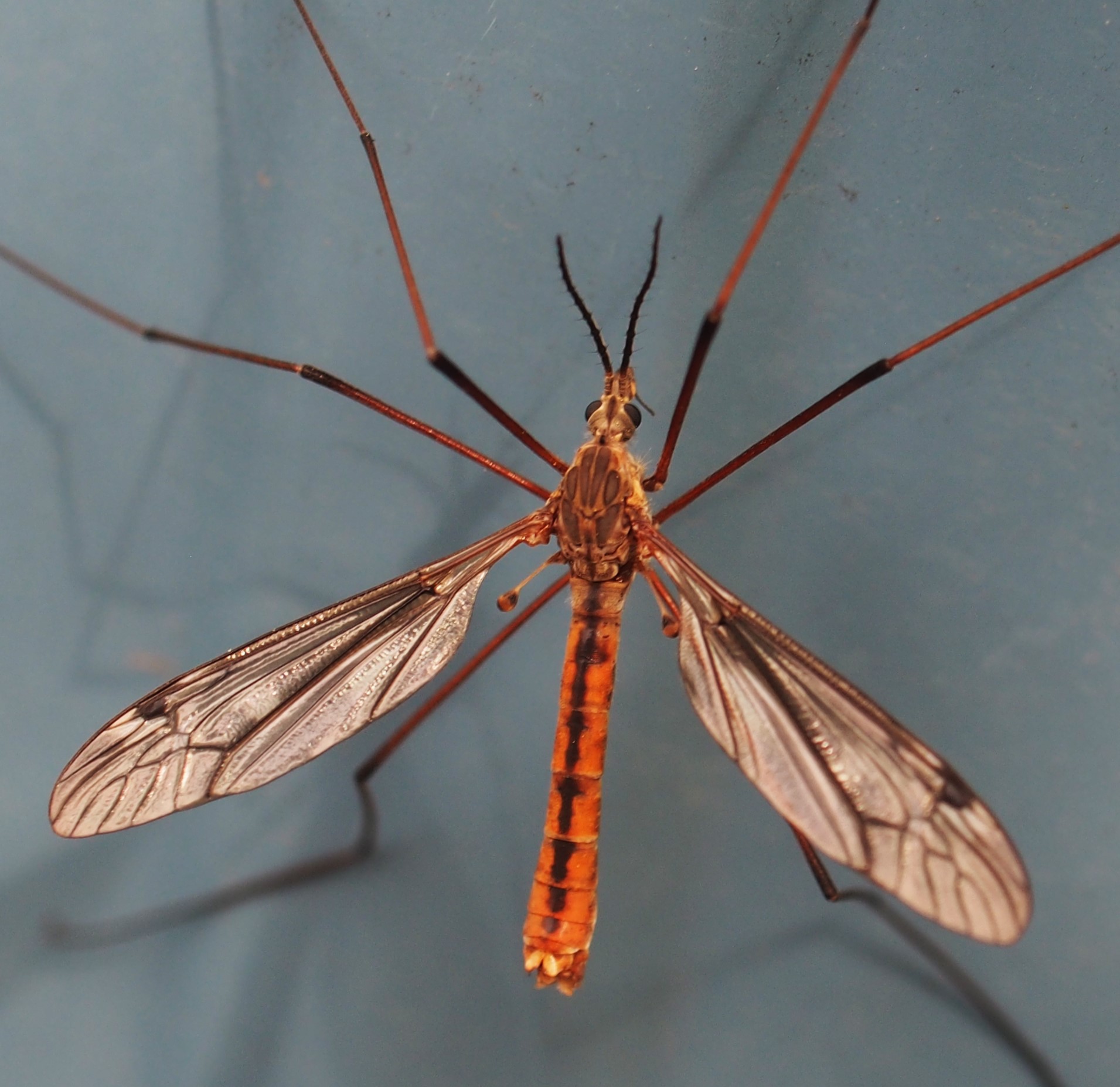

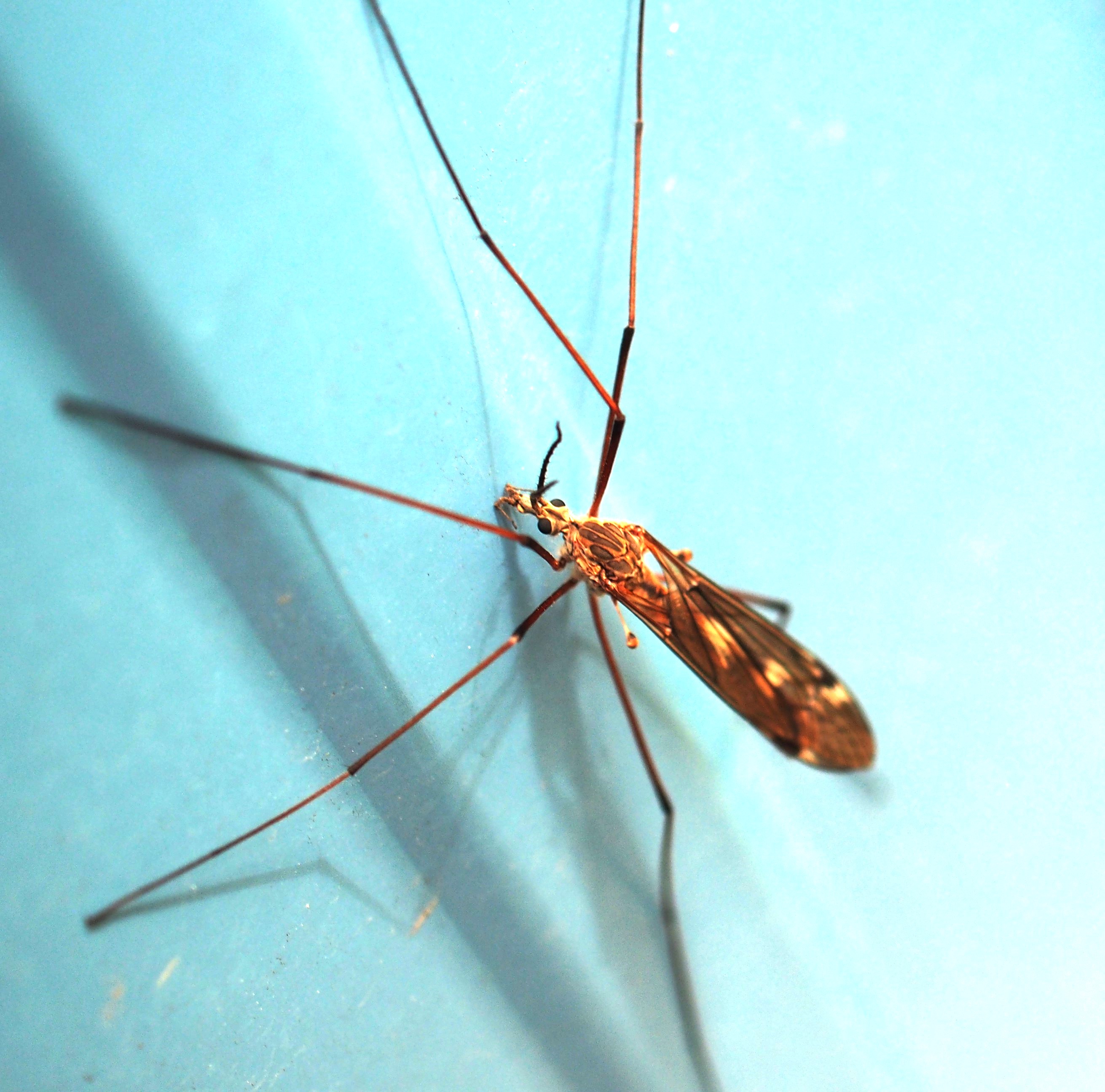
I think we deserve a Flower Walk now, after all those Flies! On the path from back yard to front, we pass the Japonica, now fully in bloom. In the front yard, I always check out the purple Hellebore. It is now at its prime, as are the Grape Hyacinth patches.
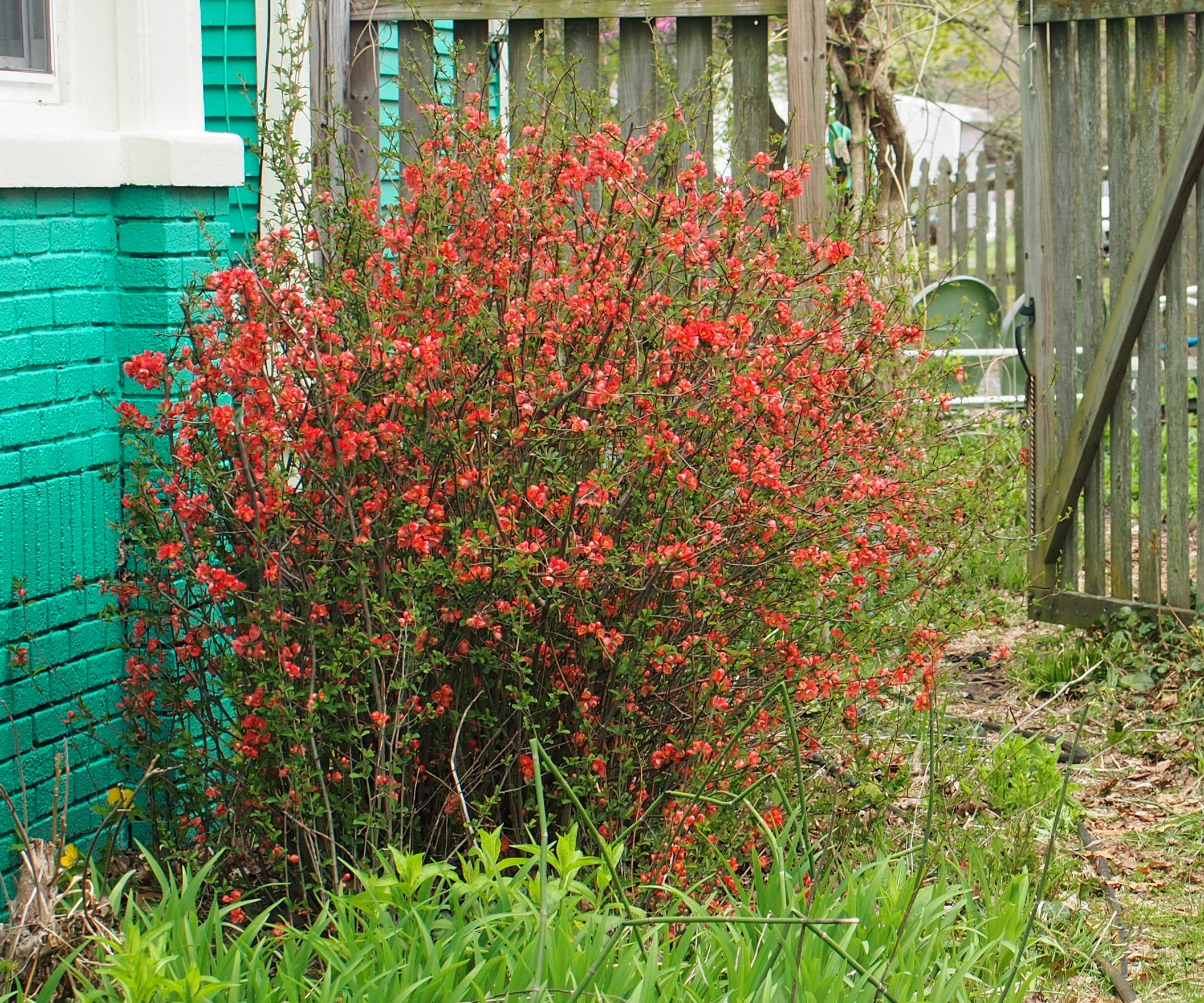
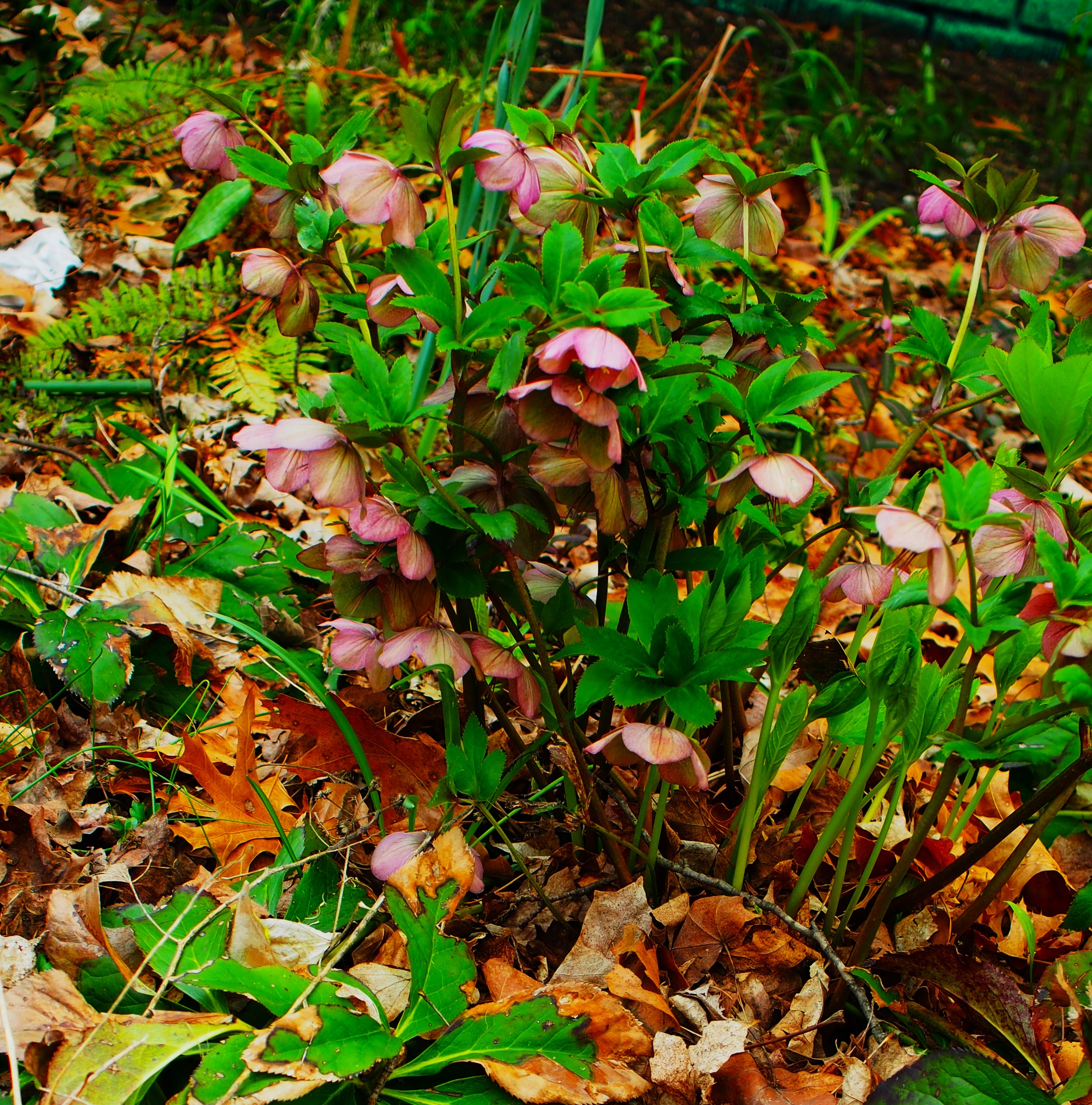

The Epimedium that Catherine Lamb gave me almost forty years ago starts off with flowers - the leaves will follow. I've been looking for the columbine, and here it is - just three leaves now. The wide-leaved Grape Hyacinth with its bi-colored flower blooms in solitary dottings.


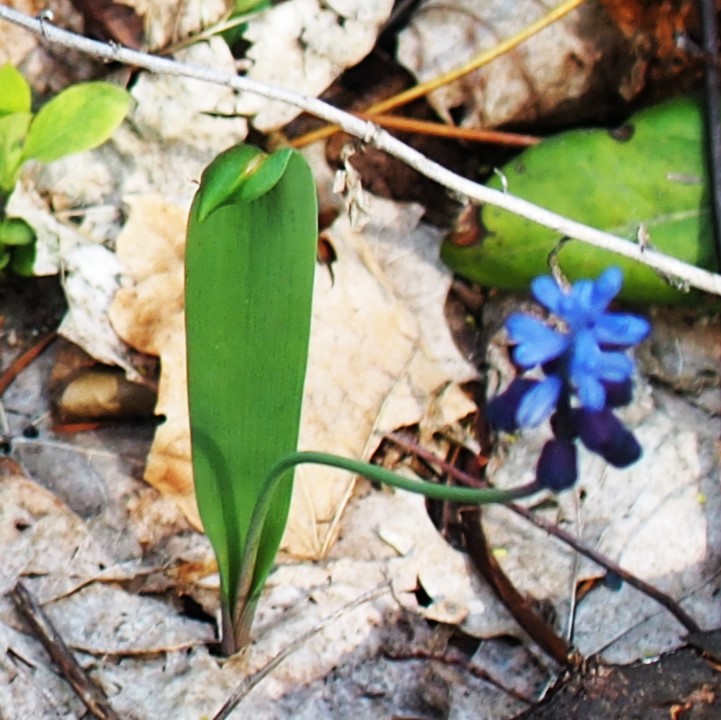
Unlike my garden's soft (you might say sneaky) appearance one by one, my neighbor Deb's judicious plantings are now at their height. Here's her Flowering Cherry and her small-flowered Rhododendron.
Across the lawn is my Solomon's Seal, which Miriam Daly gave me years ago. Thanks Miriam!



Still in the front yard, I find a few secrets. The strange green bud of last week has opened its leaf but we still don't know what it may be. And to my huge surprise, I find one of the many Primroses I used to have out front is not only alive but opening up! And along that sidewalk I found a few more living Primroses.
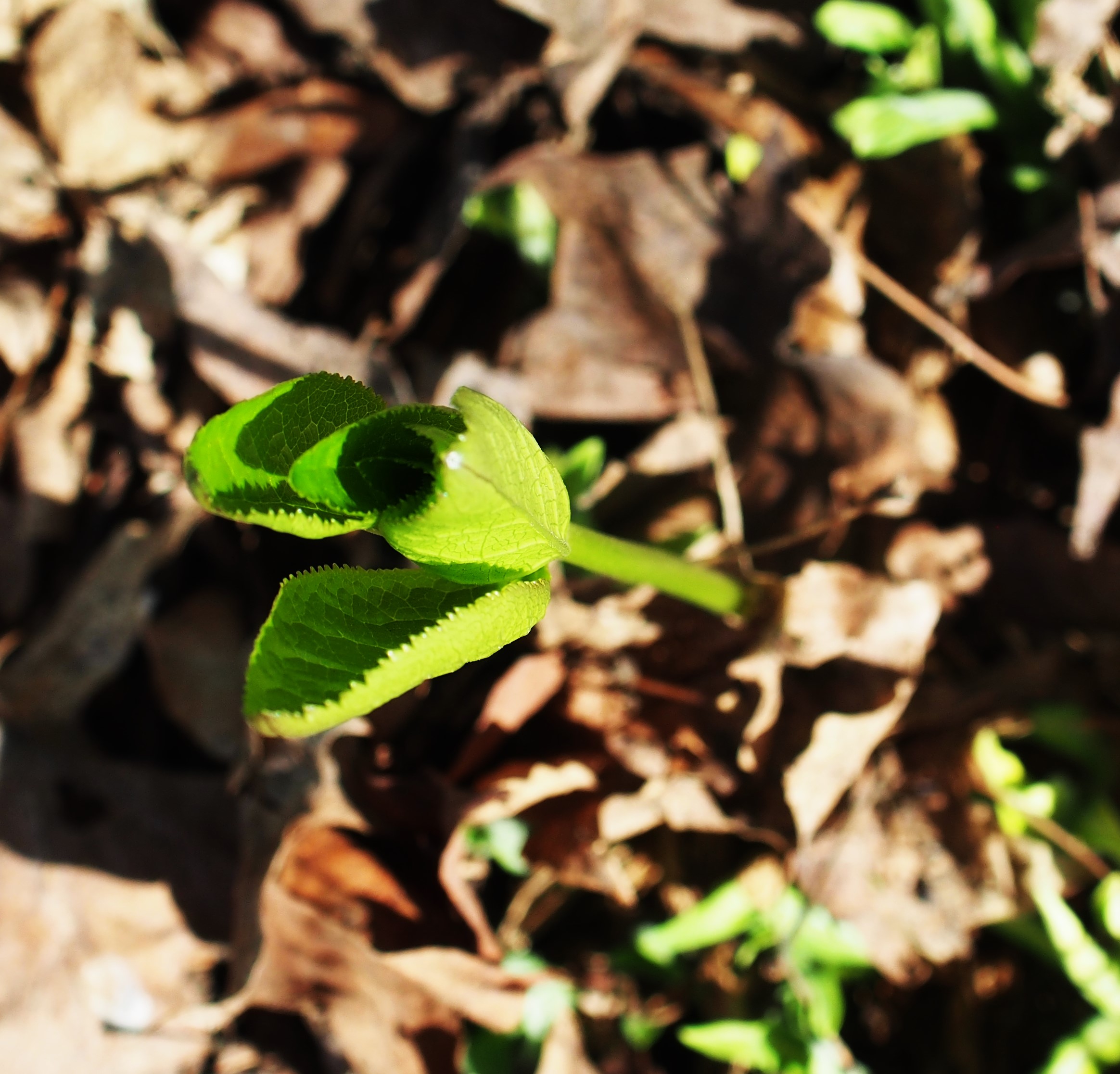
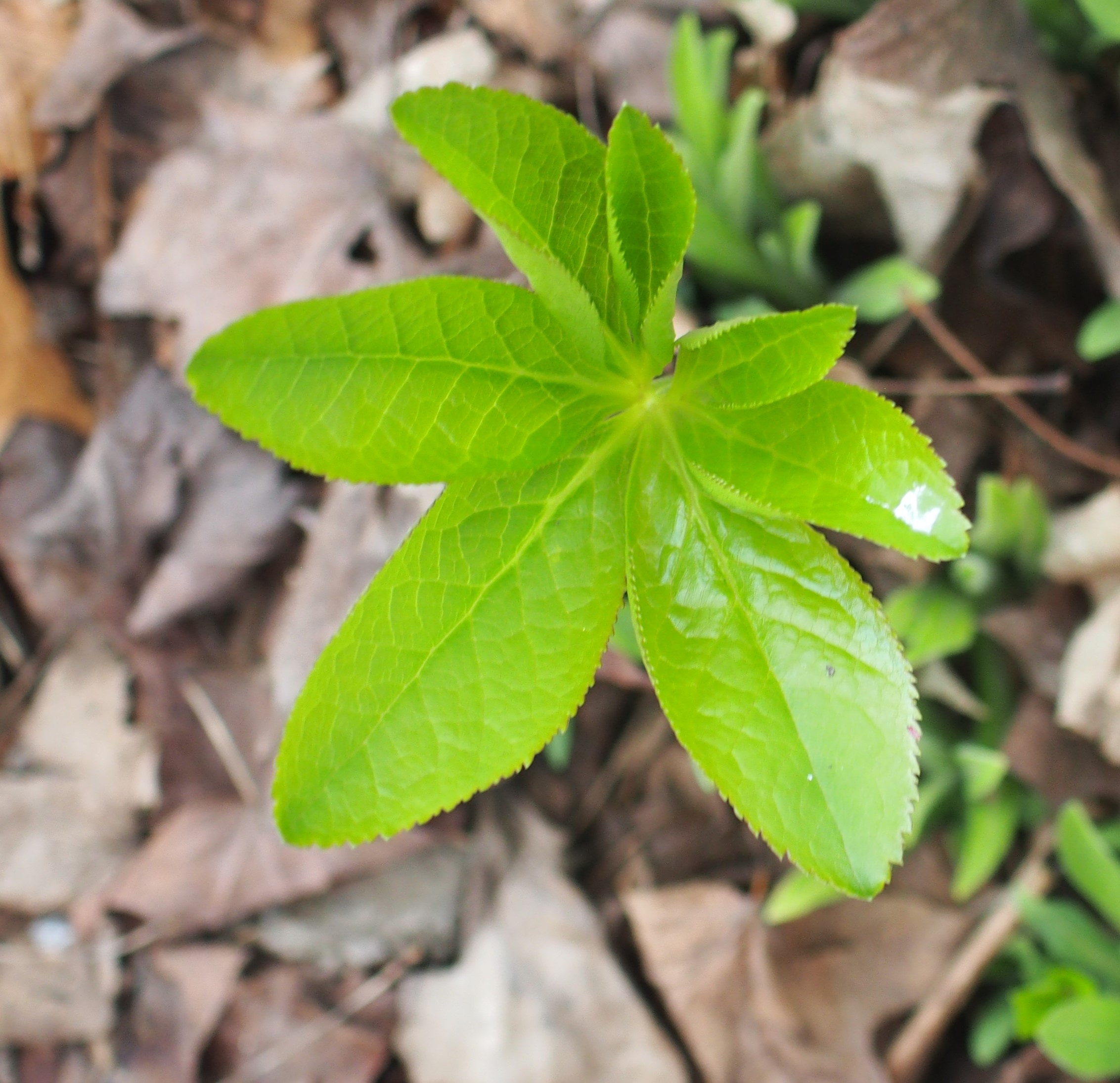
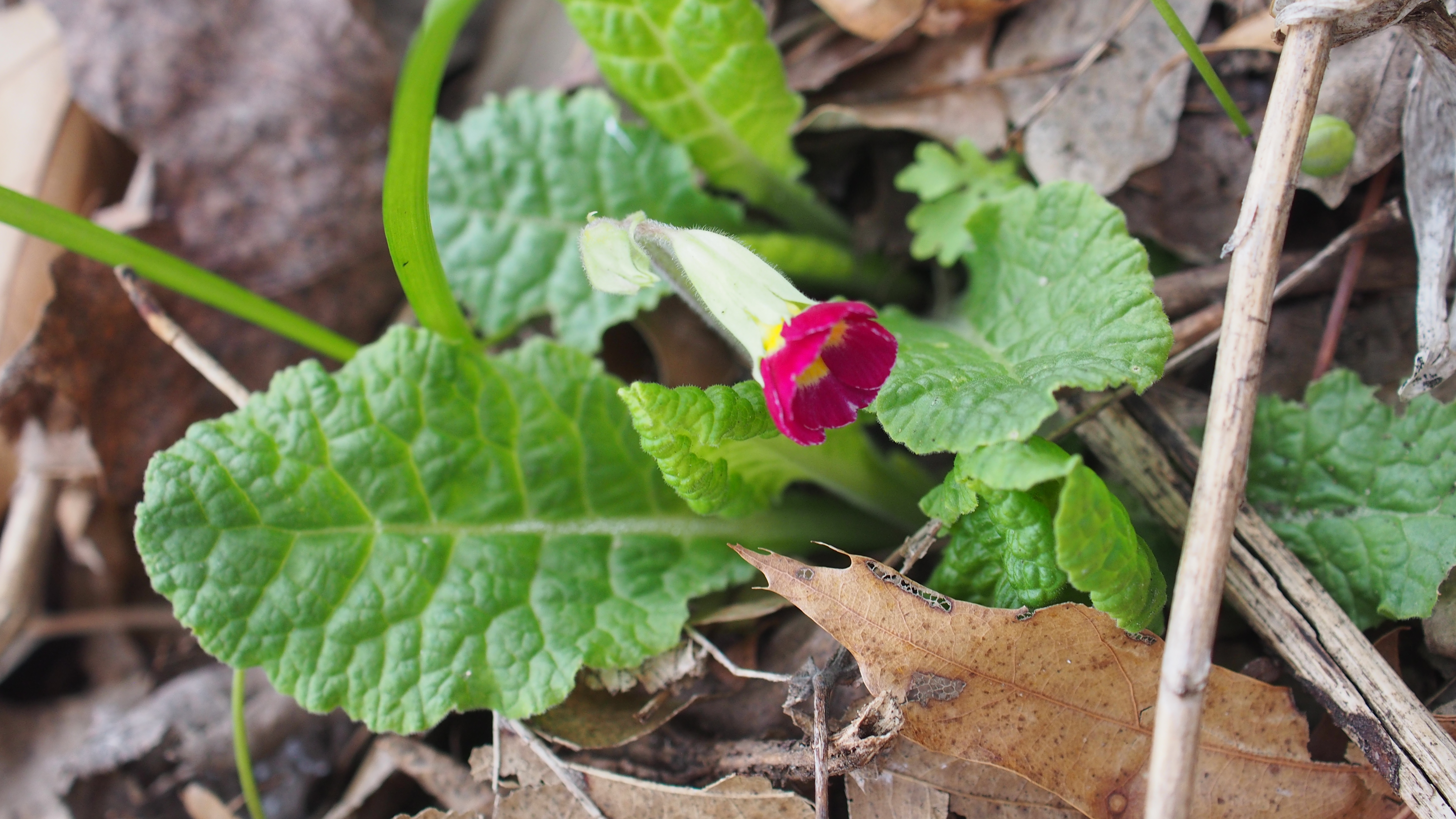
I think it's time to head back through the fence, but before we reach it, we see the Garlic Mustard that was home to the tryst of the P. ochripes beetles. A couple of days ago, I had mistaken this weird tiny threadlike caterpillar for the larva of the beetle. But it turns out to be the larva of a Geometer Moth, like other loopers we've seen, just TEENSY! Picture 2 is the Mustard itself.
.gif)
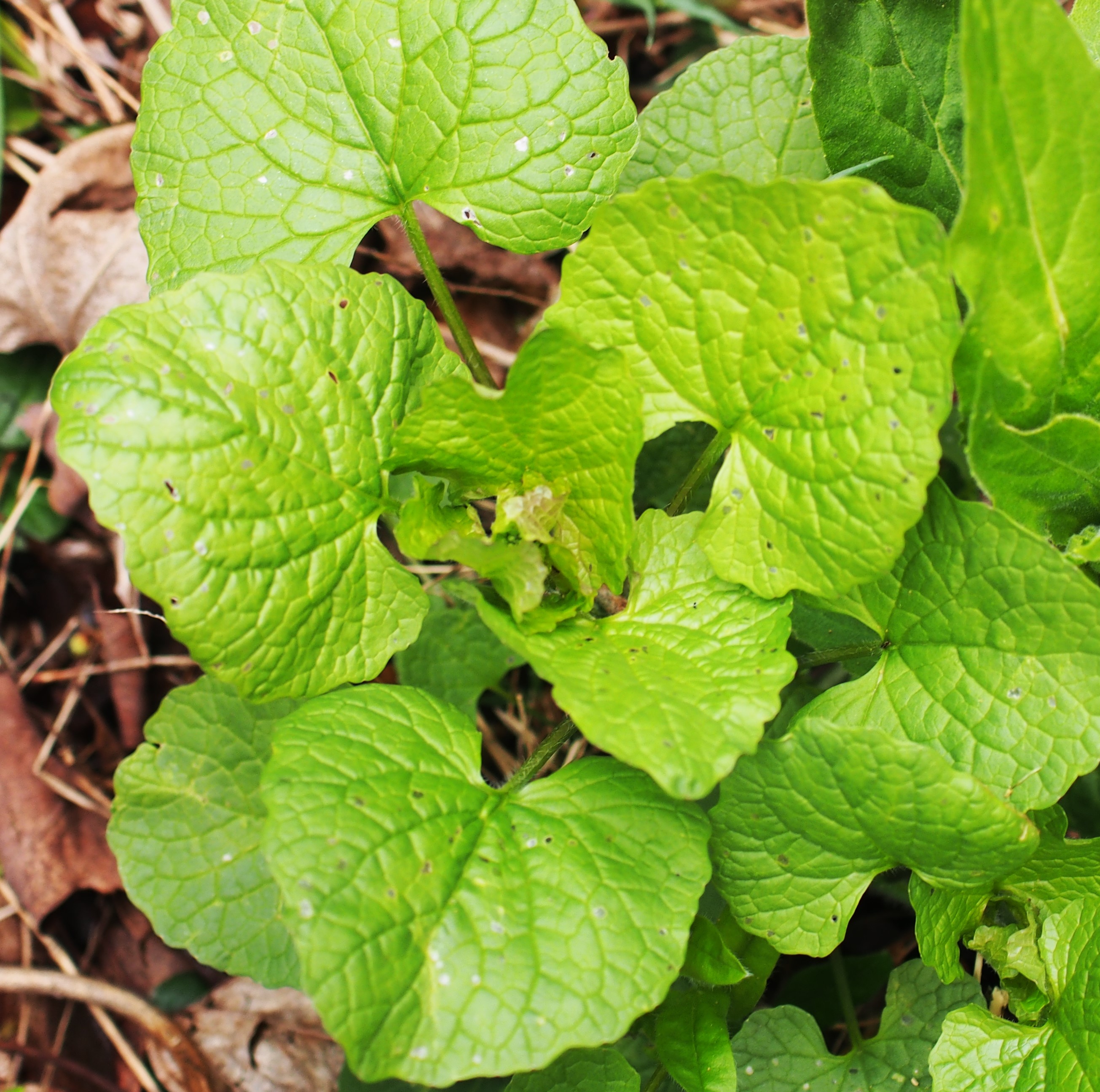
We head through the gate, and find ourselves back in the Back Yard. Since it is a rather higgly-piggly route, I'll show you what we have in no particular order. First, that pink Hyacinth has probably survived its last flattering photo. In contrast, the Celandine Poppies will probably bloom throughout the Spring and most of the Summer. The Virginia Bluebells are approaching their height.

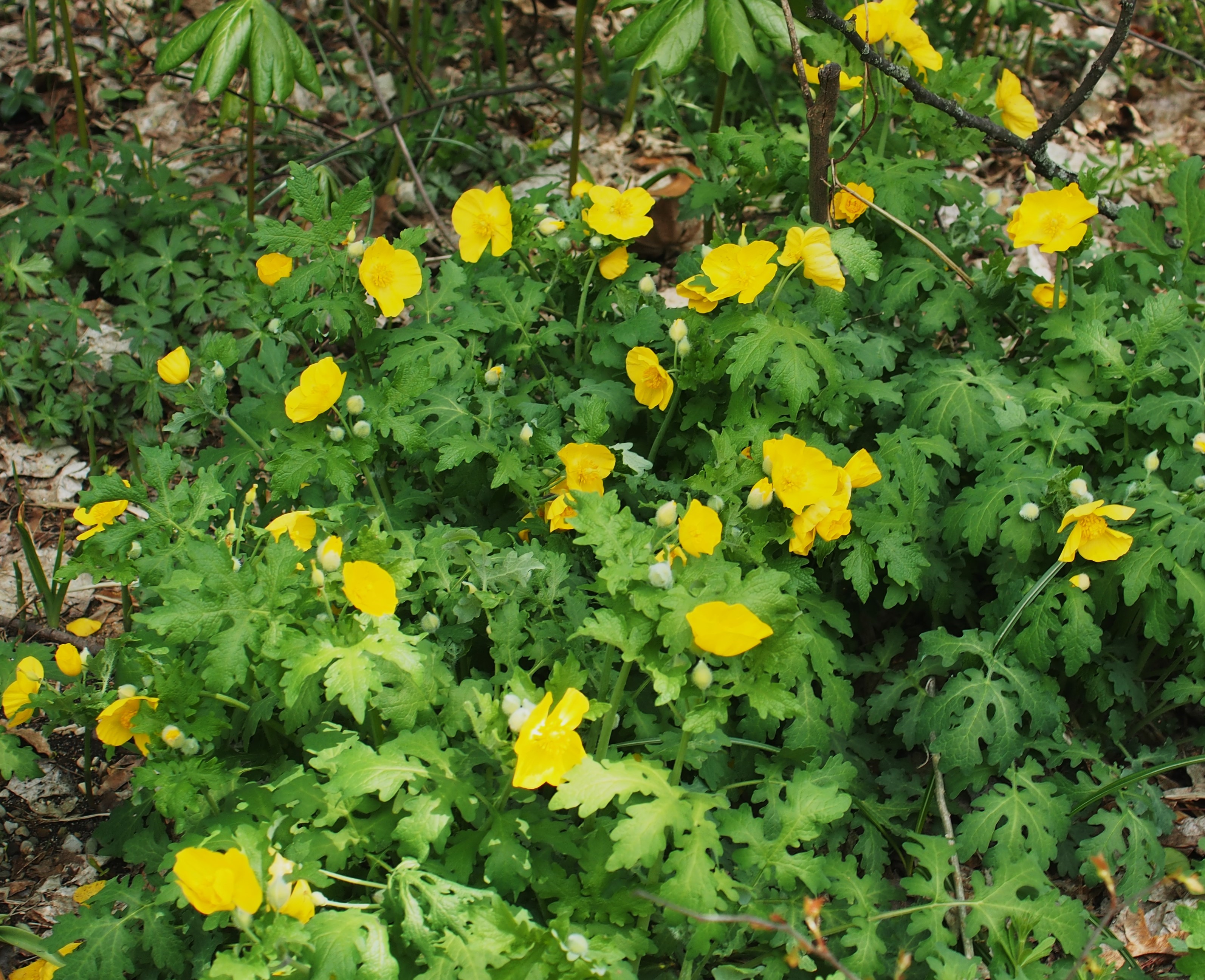
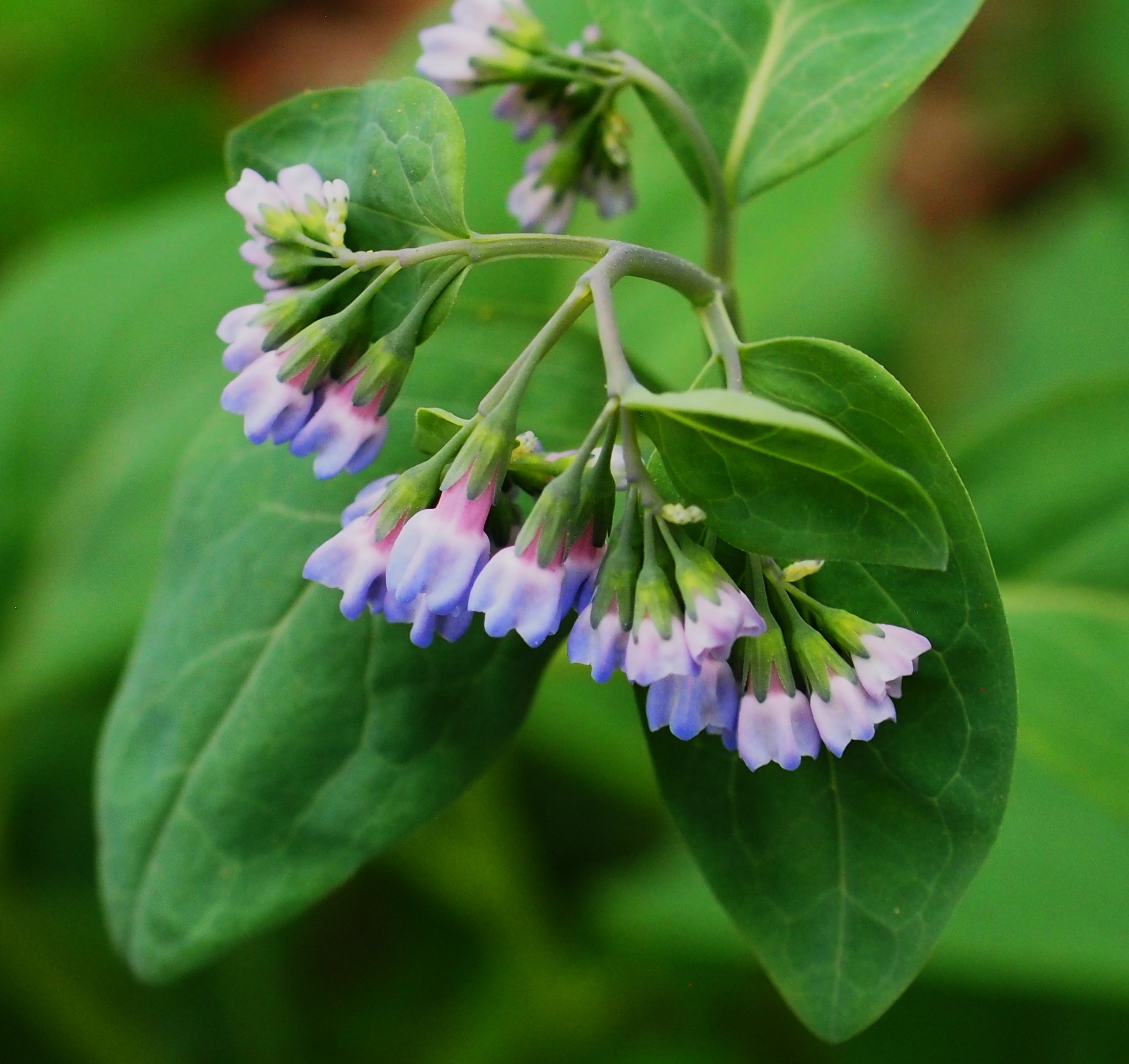
This tiny flowering plant almost got stepped on, and I still don't remember what it is! But no way to forget that Redbud in bloom.
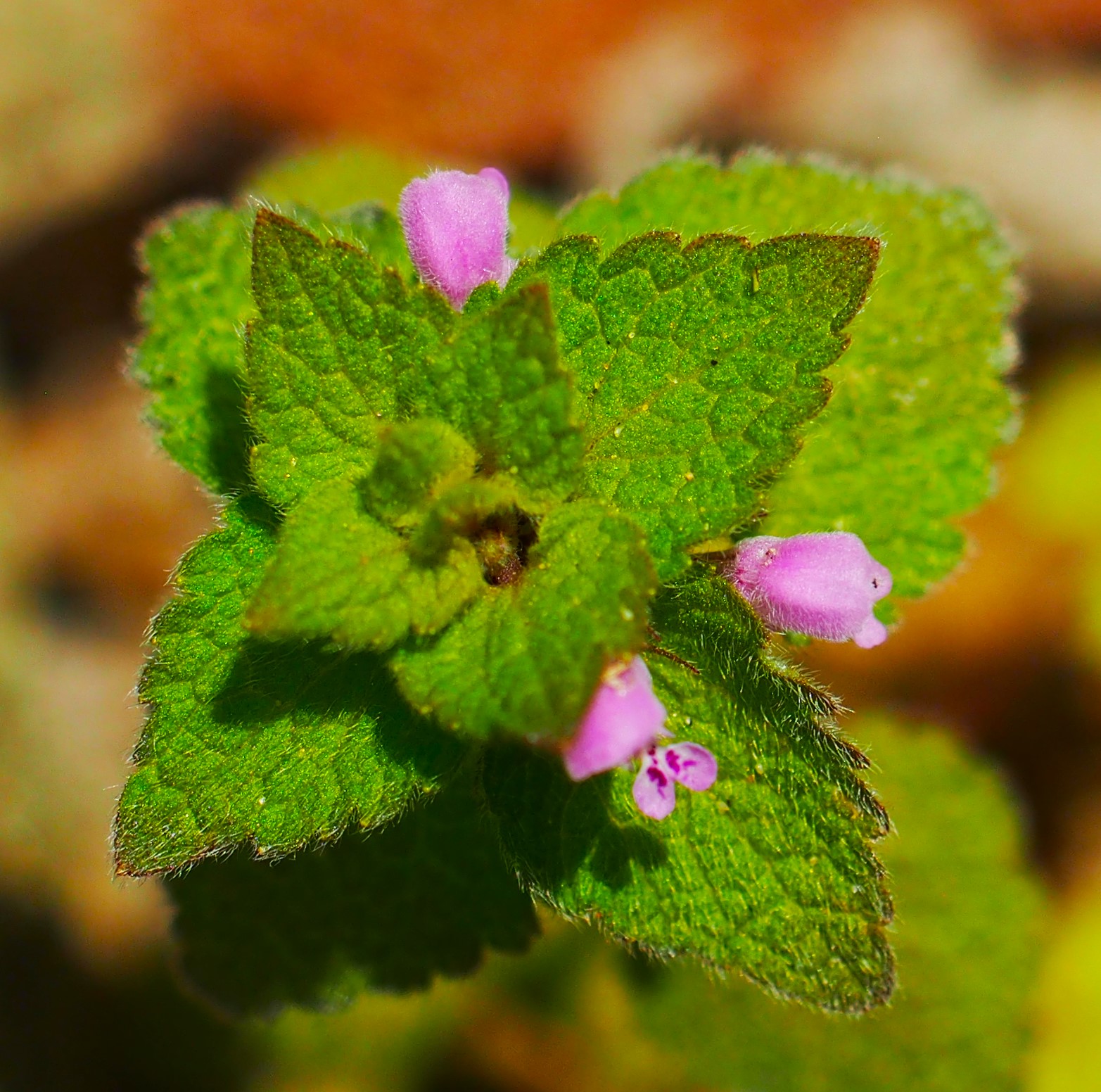
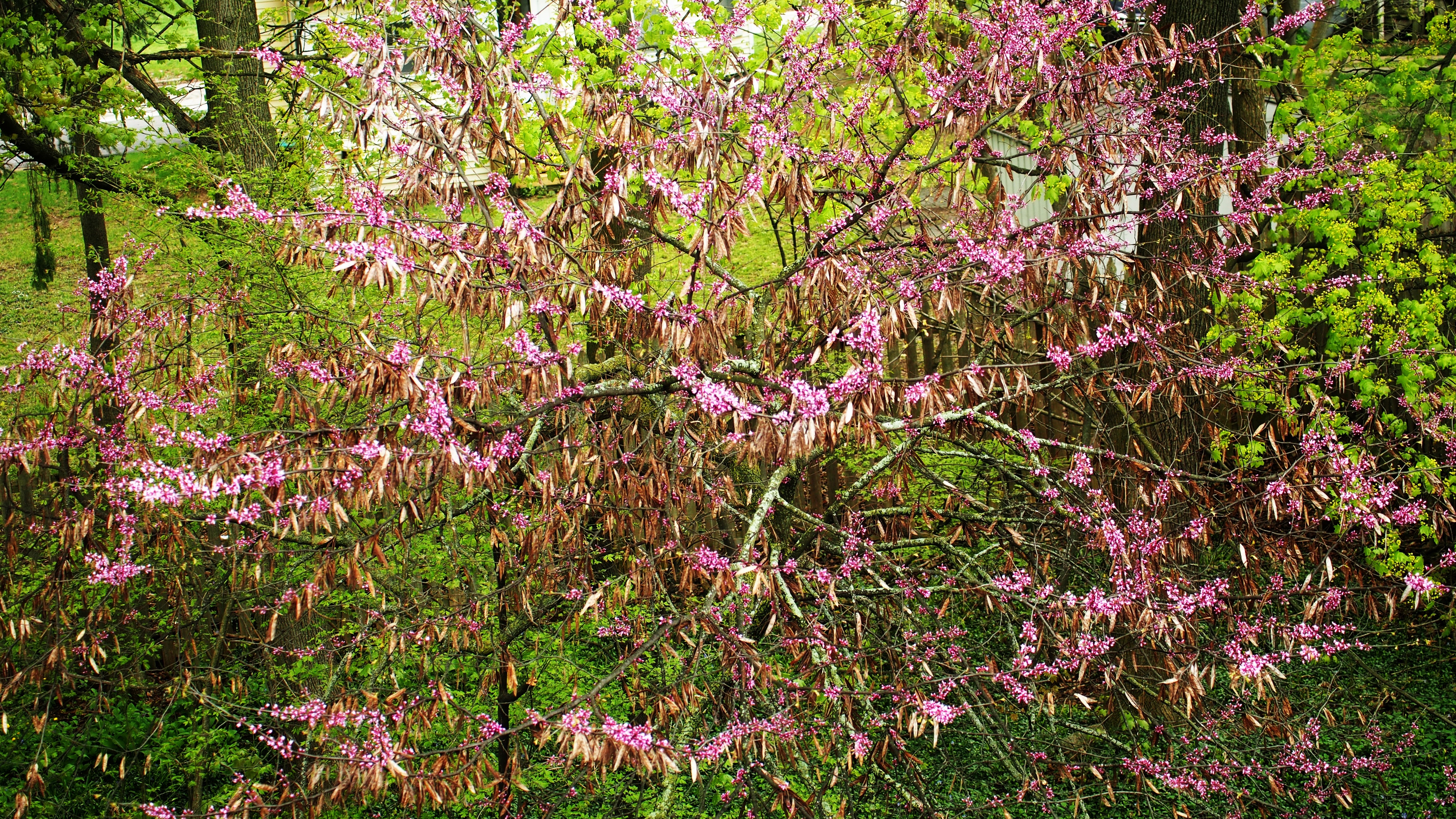
A couple of surprises. This is probably the earliest picture I've taken of Forget-me-not. Next is the White-flowered Tree from the North side yard. And finally the Wild Ginger.
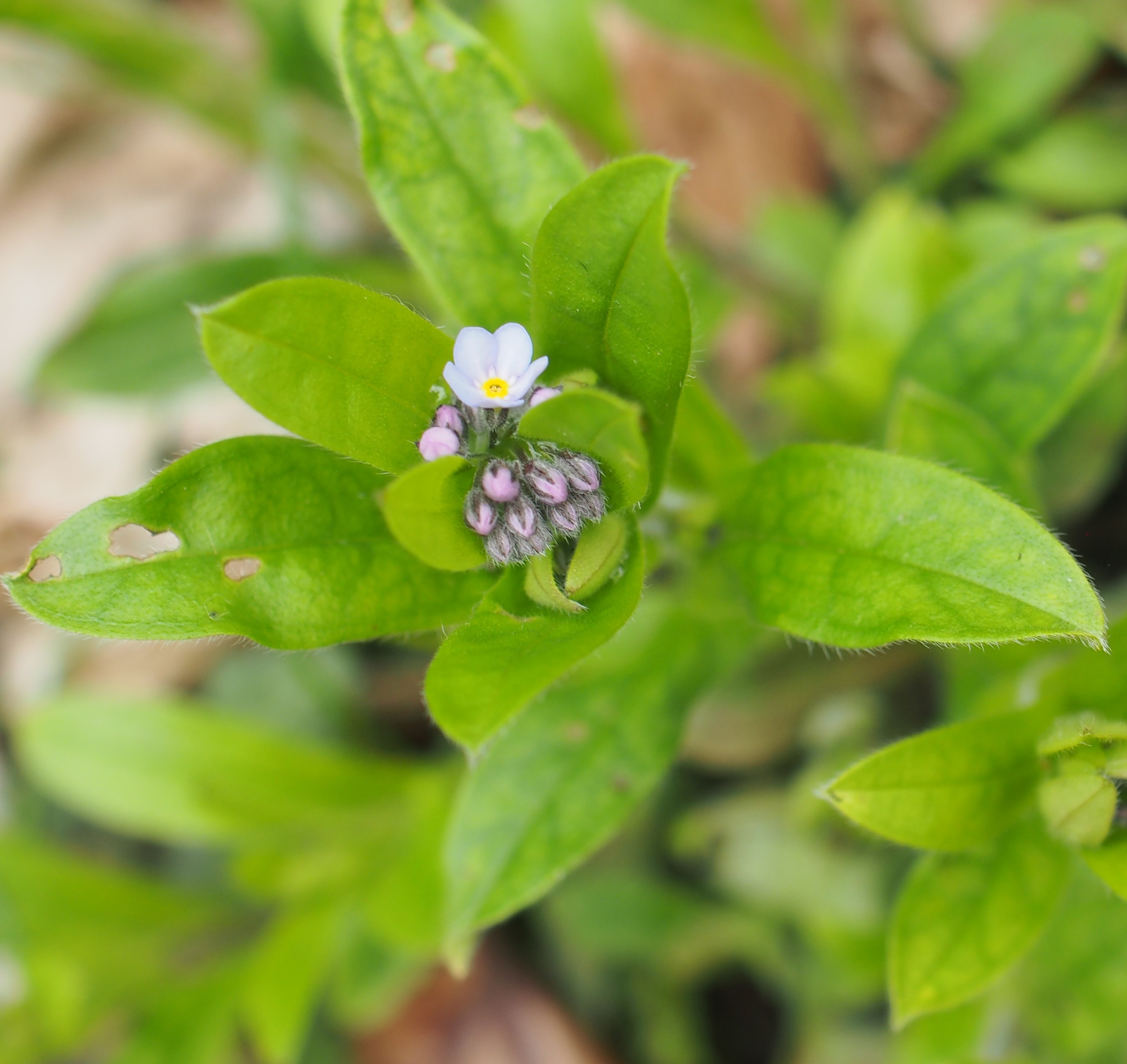
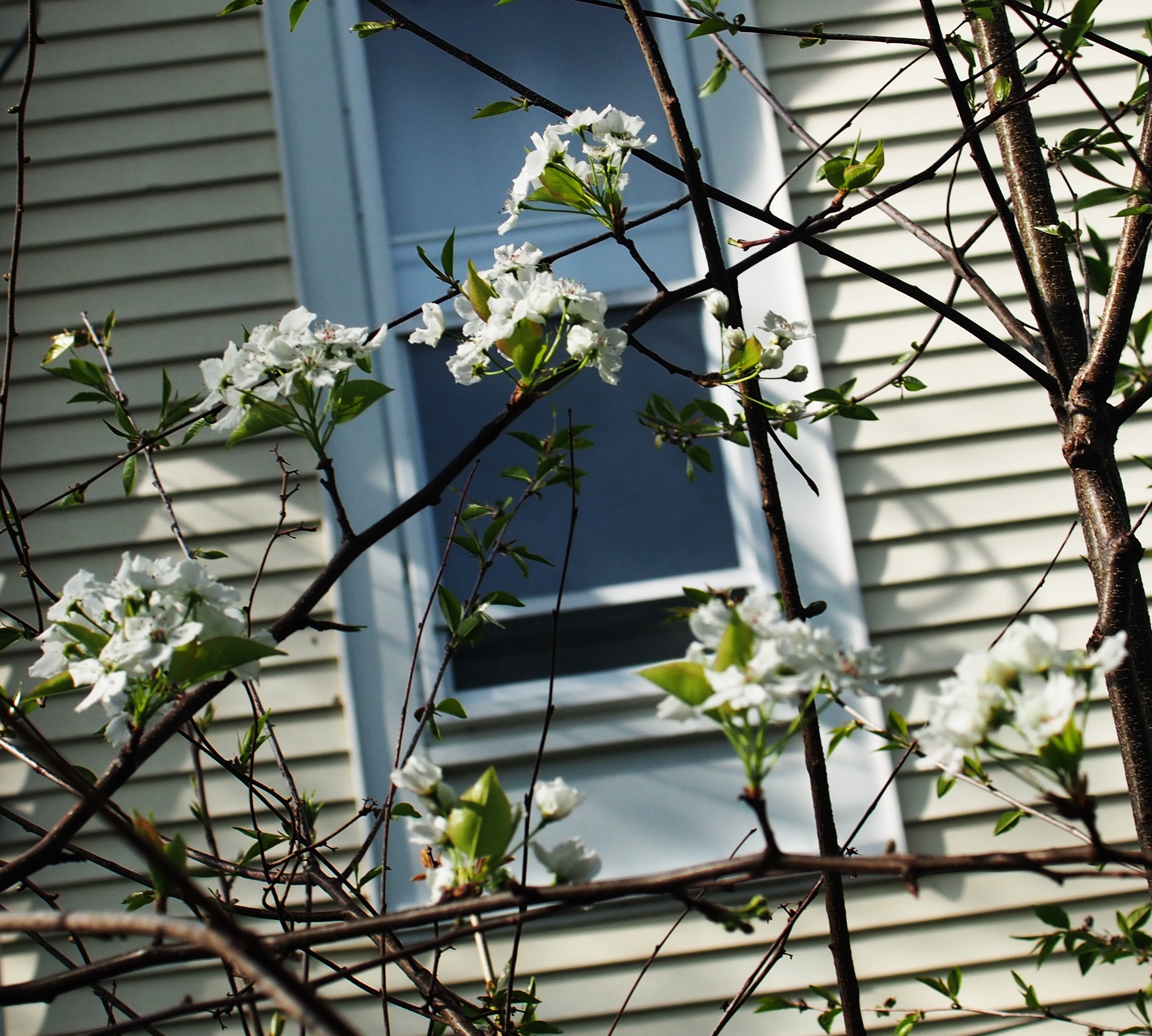

Our Walk having come to an end, we go off hunting Spiders. My most hilarious mistake was in wondering what the relationship between these two Spiders was. It turned out most embarrassingly that the one on top was only the remains of a Spider's hunting trip - his real self only occupying the bottom part. He is a member of the Trashline Orbweavers! They just leave anything related to their past on the line to admire! Speaking of the Trashline Orbweavers, @paolosol just told me this last Spider is a Humped Trashline Spider! I think the "hump" might be the mysterious thing inside the Spider!
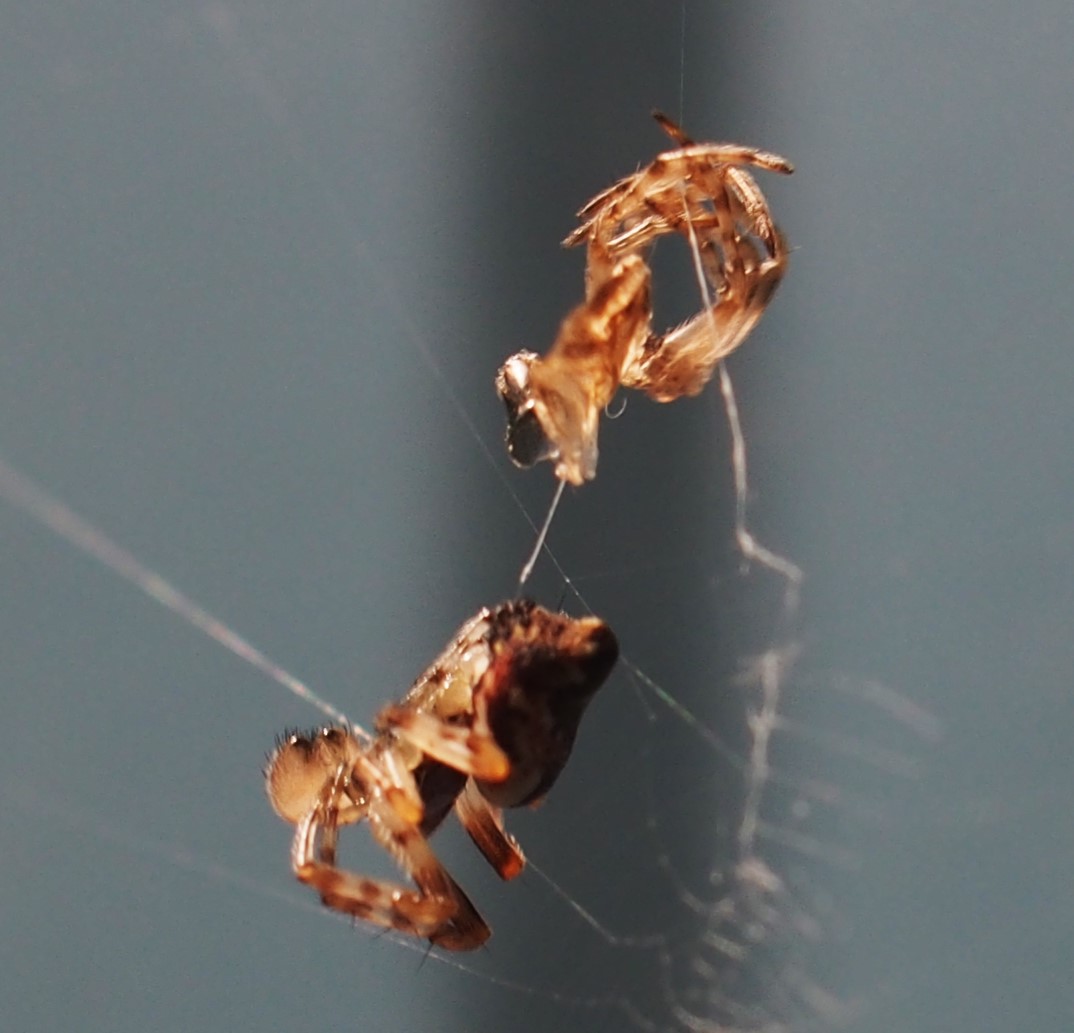
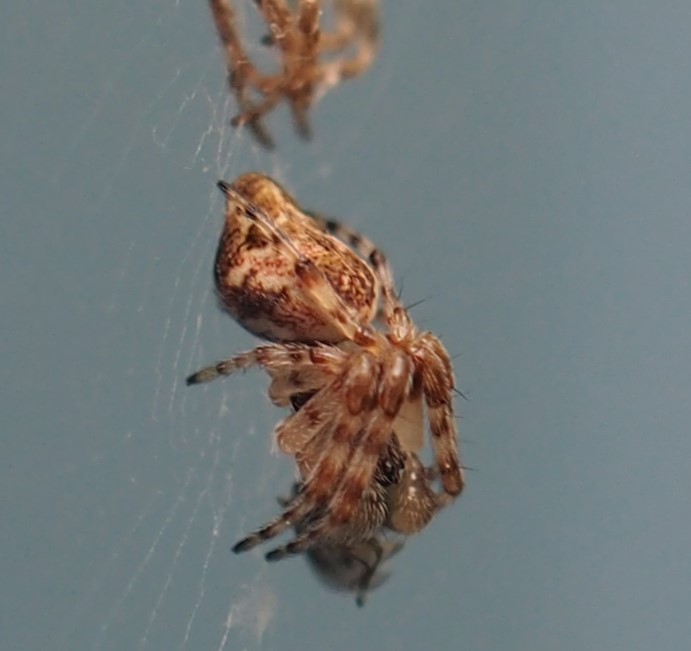
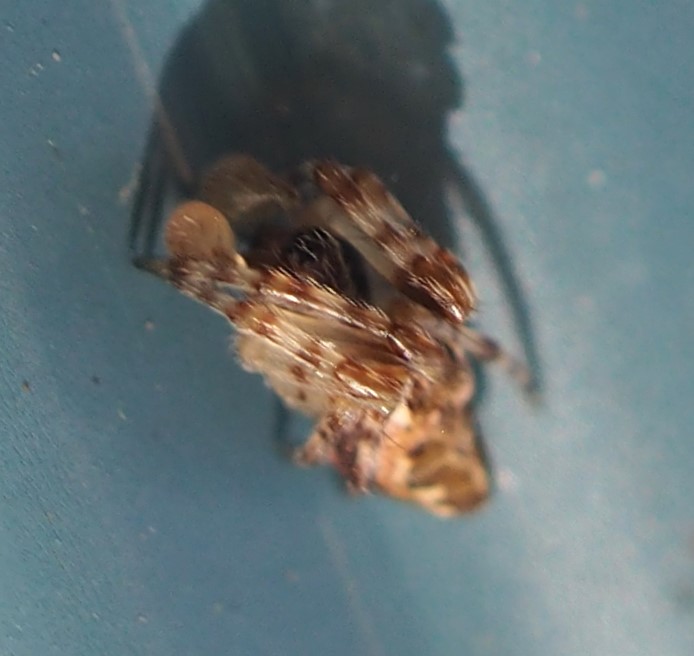
This next one with the prey item in its grasp is a member of genus Parasteatoda, the same genus of Colorful Comb-footed Spiders as the Common House Spiders! Pictures 2 and 3 show that very Common House Spider.
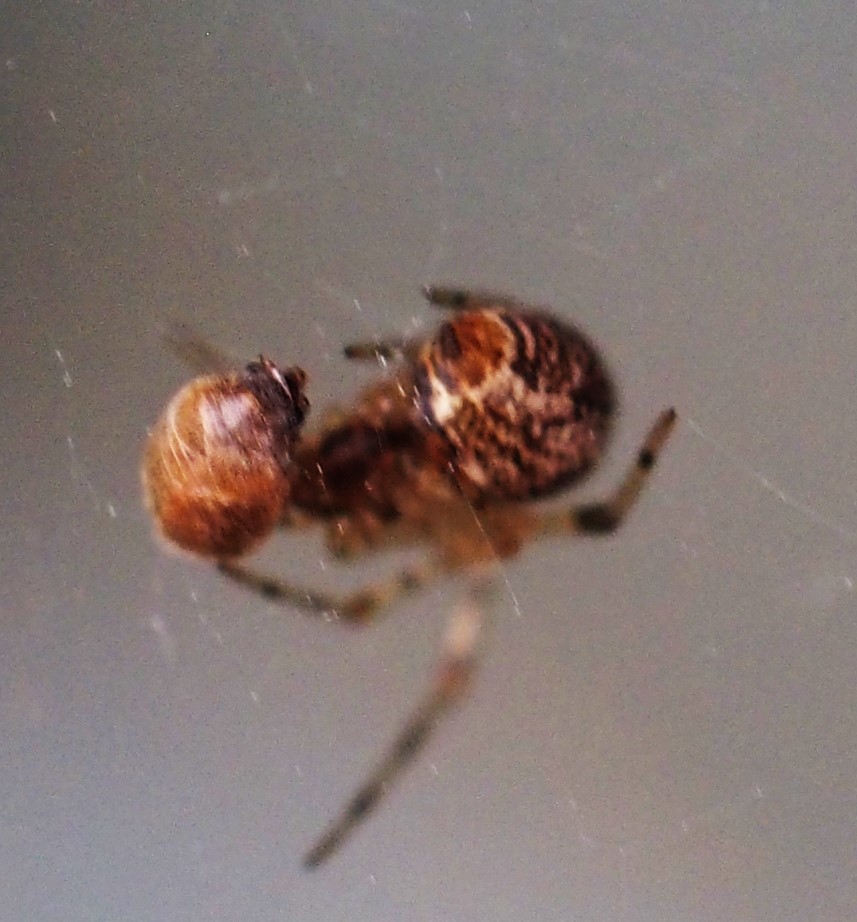
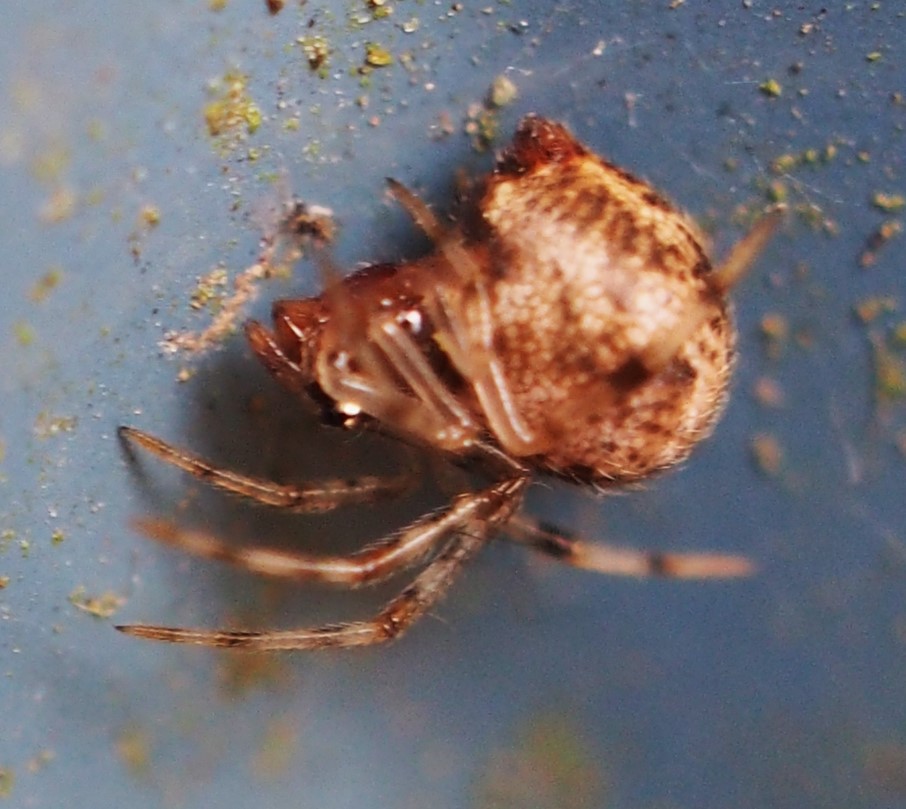
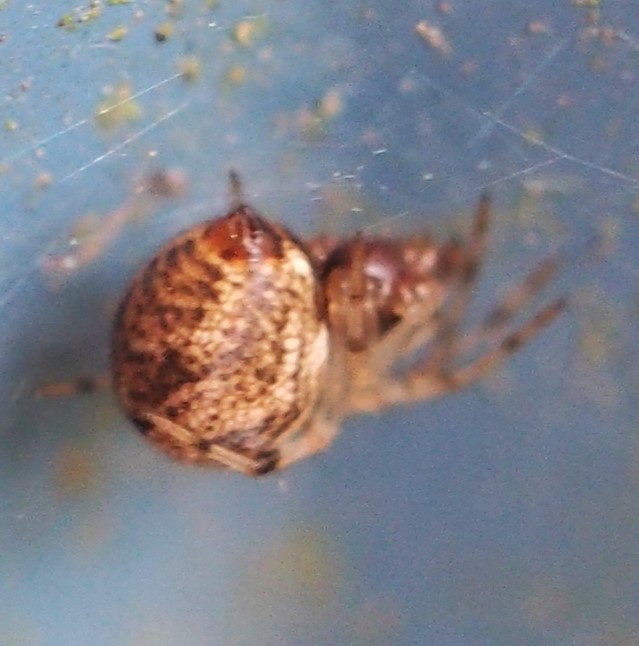
The high point of the Spider week was when I saw this Ant with the white legs. I managed to get a few shots of it, despite its ANTics (chuckle, chuckle). Have you got it? If you counted those white legs, you should have gotten eight! Our Ant is a Slender Ant-mimic Jumping Spider. Jumping Spider? Well, look again at picture 1 and you'll see the front-facing Eyes.
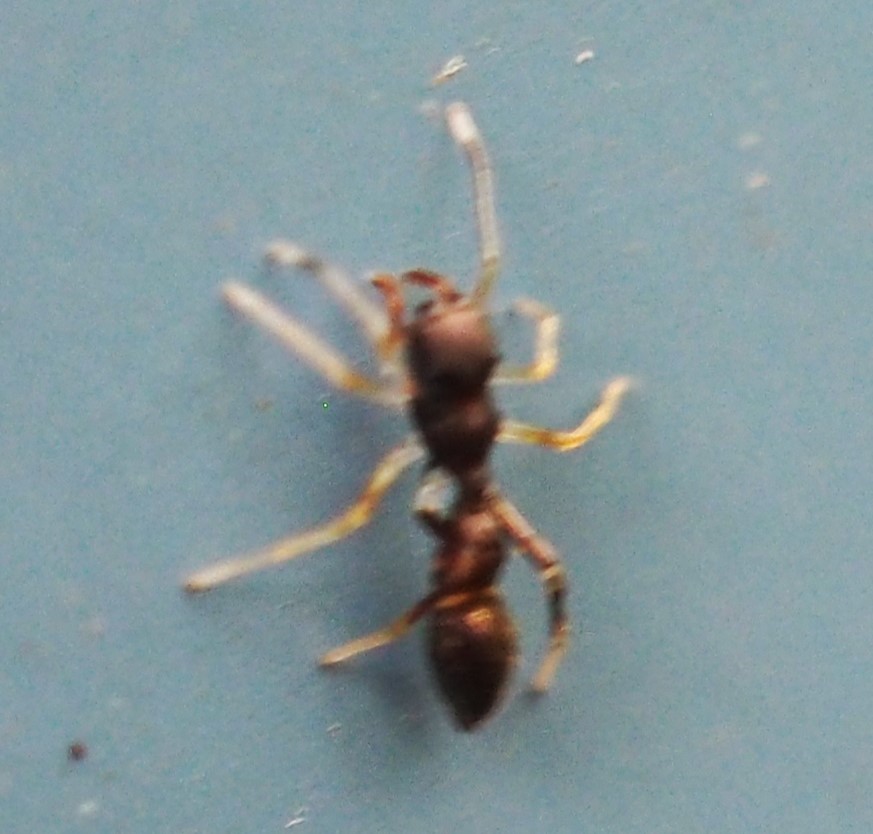
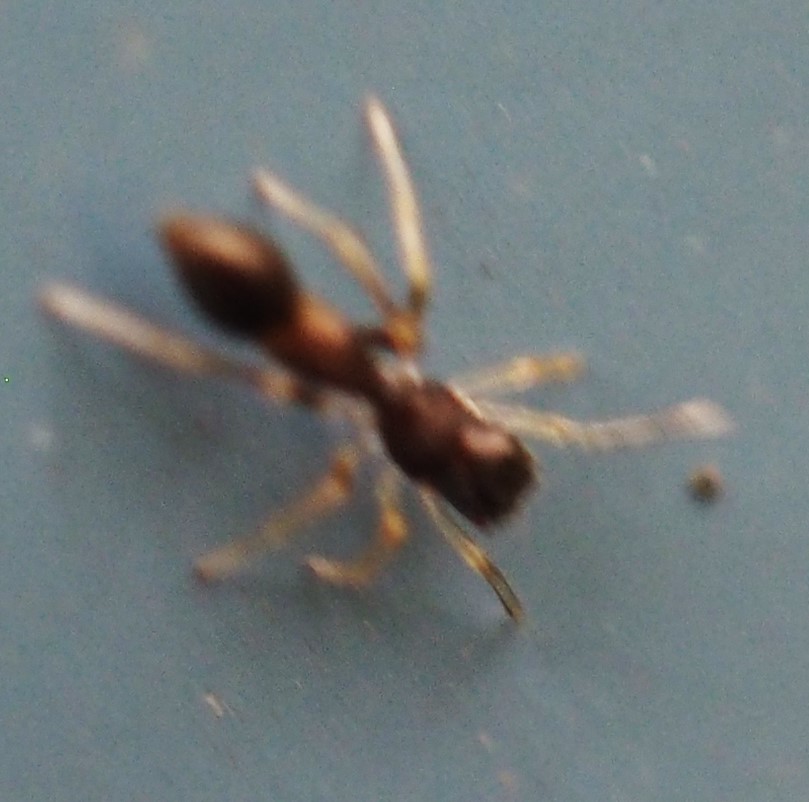
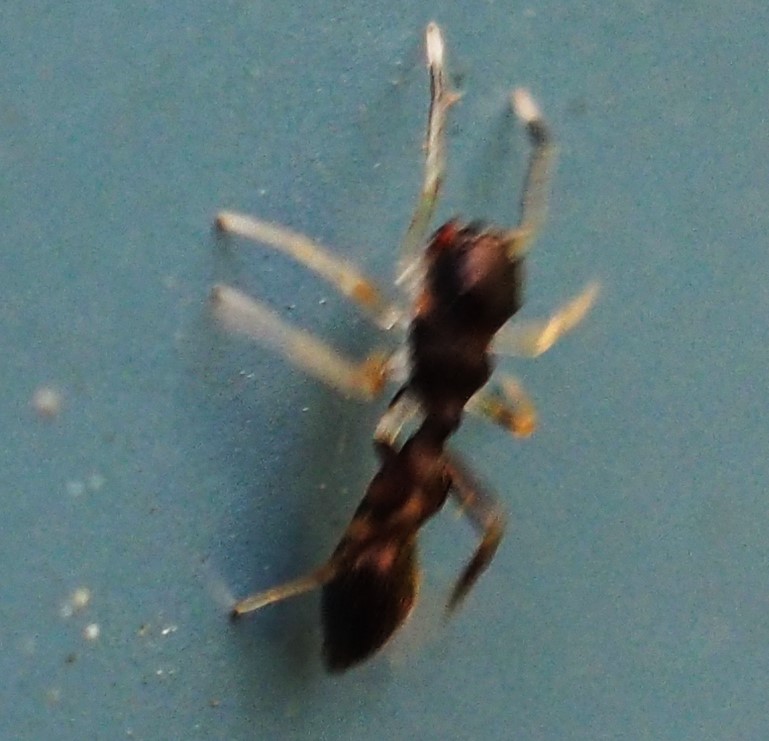
I seem to keep running up on the Lyric Cobweaver (pictures 1 and 2). It must be a very common one or maybe it likes my yard. What good taste it must have. The third one is the only clear picture I got this week of my favorite Common Cannibal Spider, Mimetus puritanus.

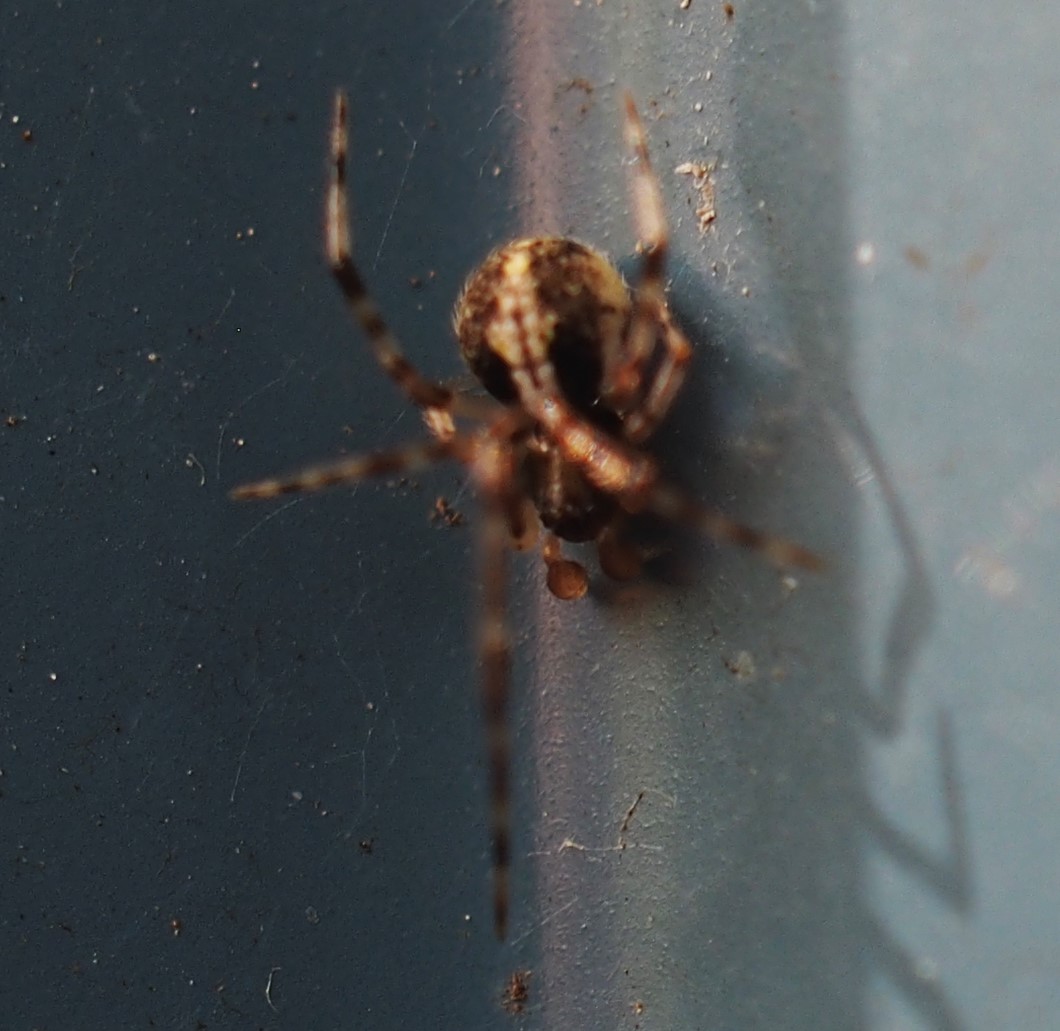
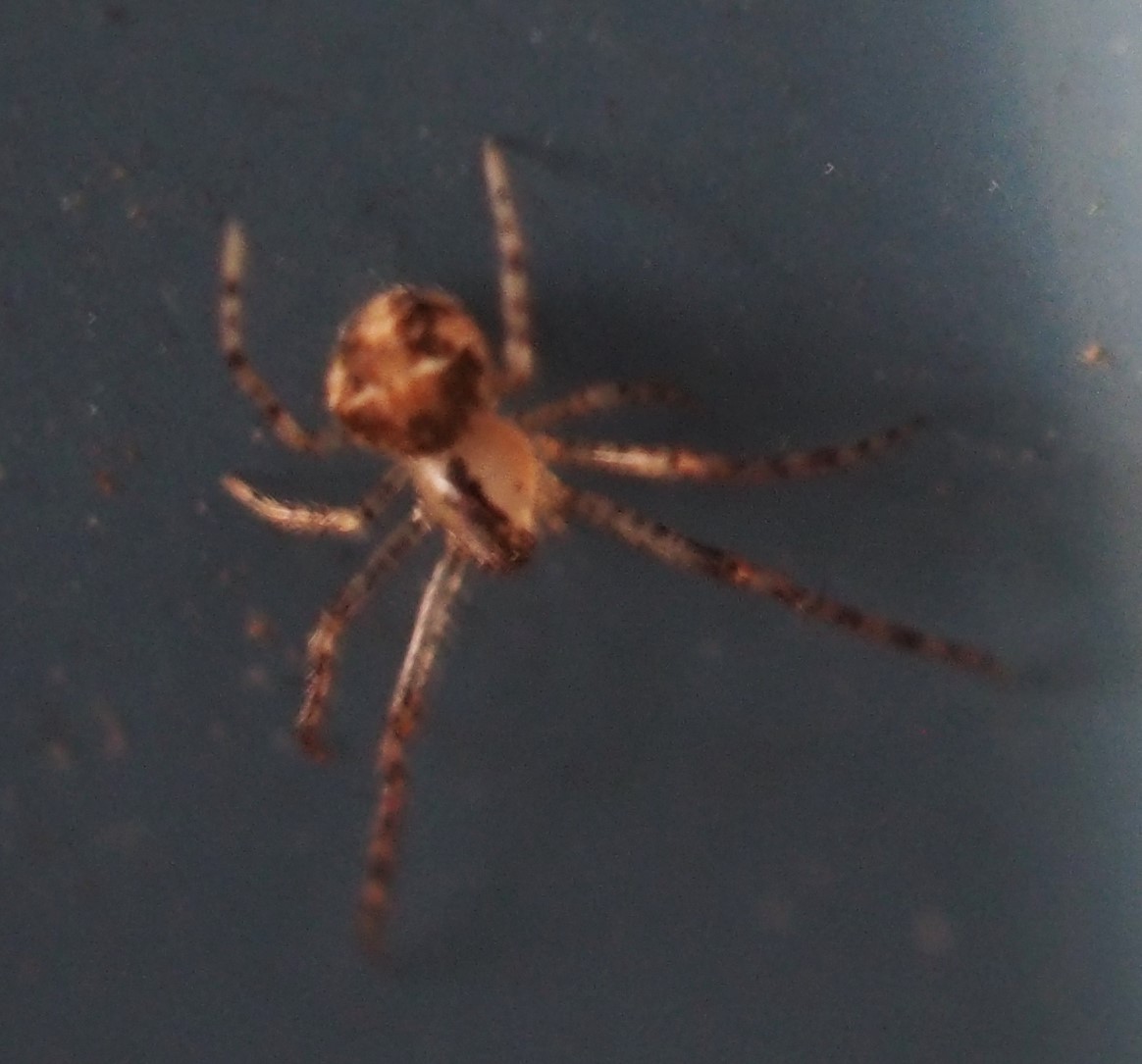
Of course we had our share of those Dwarf Spiders that are almost too small to see. Whatever I may think of my present camera, it does take a few pictures of a few invisible things!
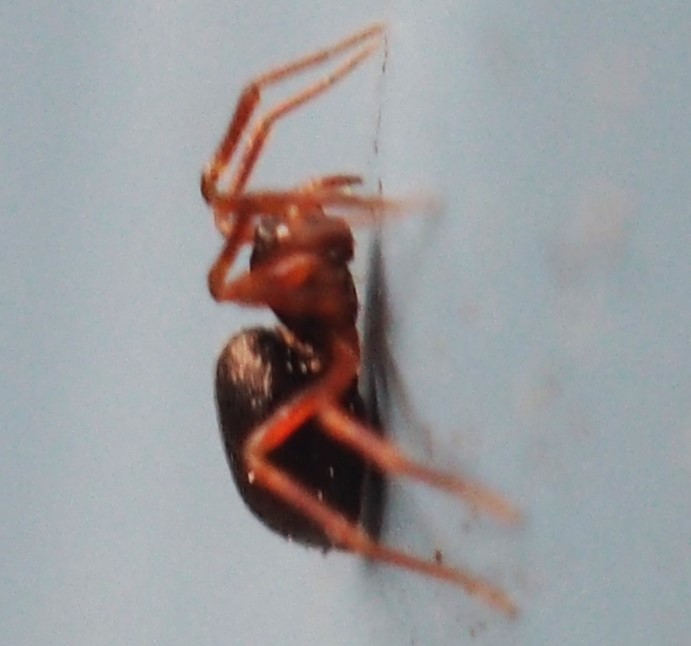
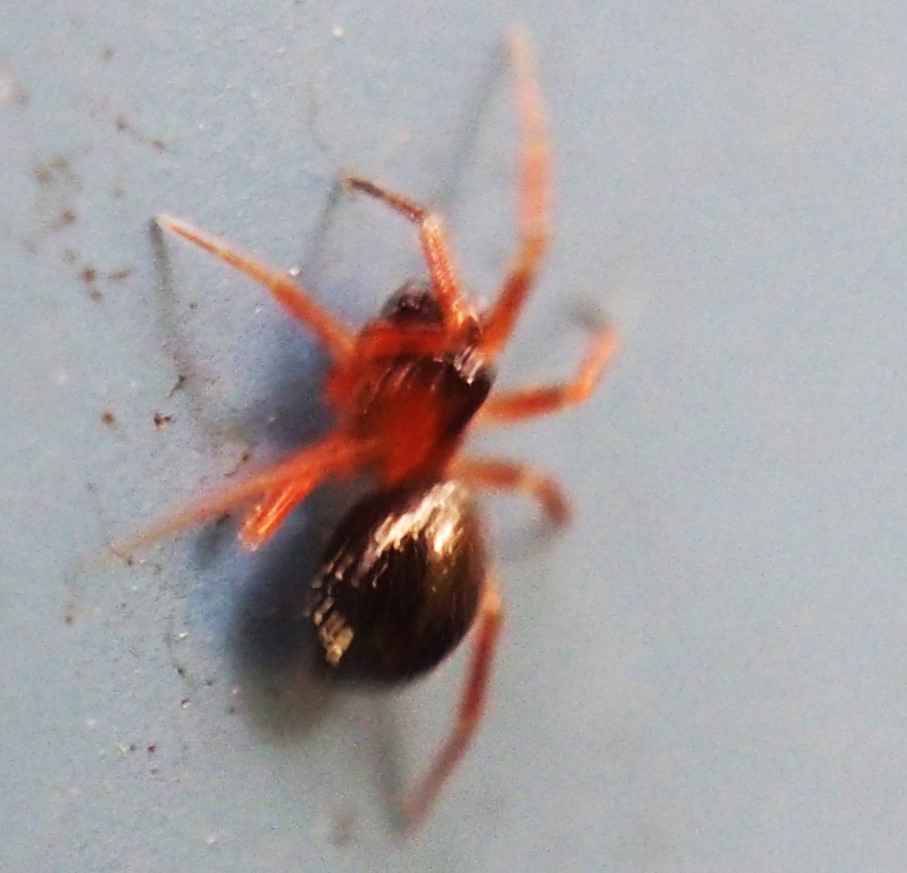

Here's something that makes this game harder. That's when you have an unknown Spider (hopefully) nabbing another unknown prey item, as in these first two pictures. Of course, a partially dismembered tiny critter isn't much help either, as in number 3.
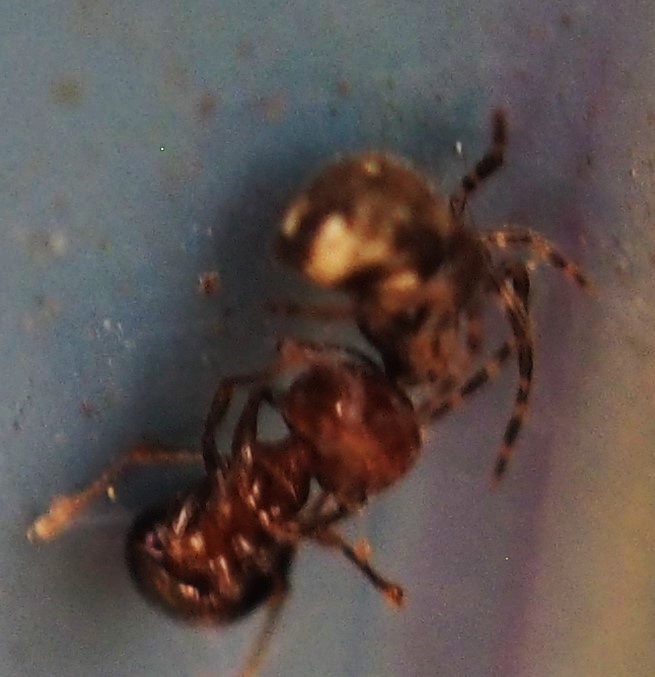

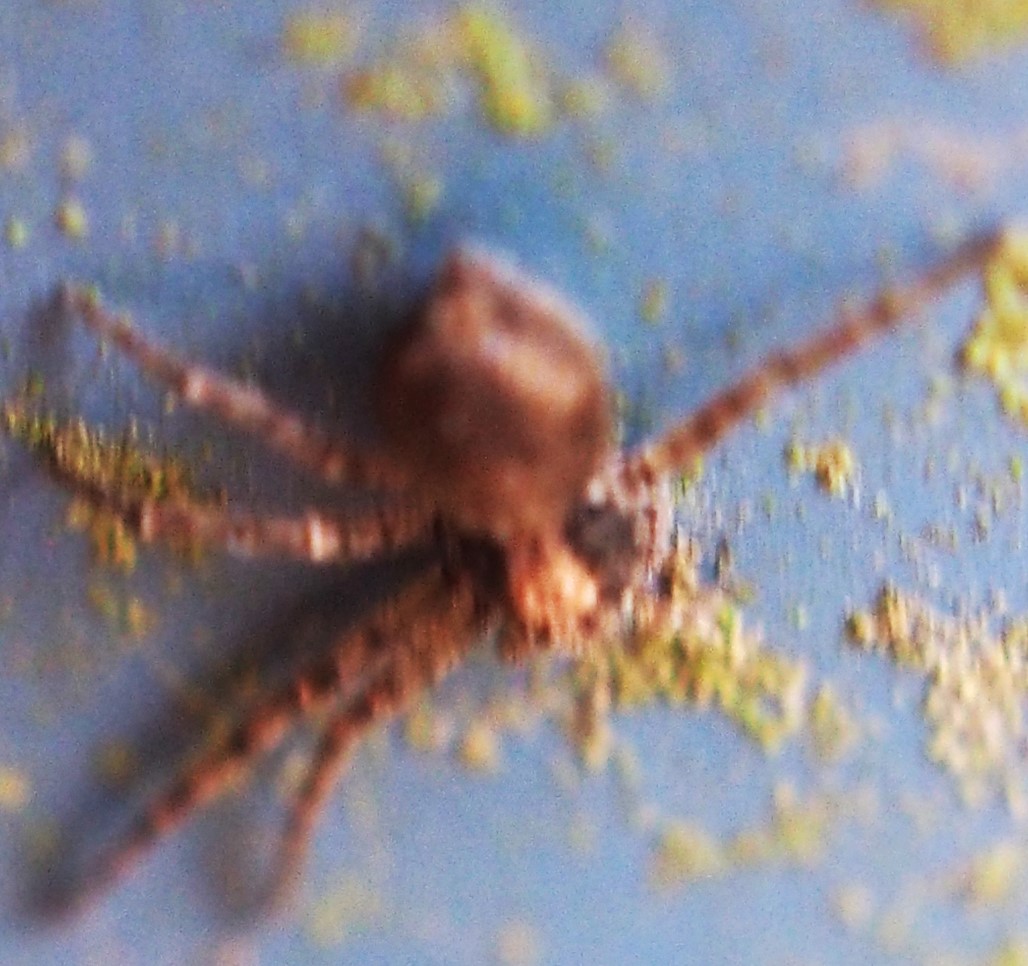
Let's relax now and watch the Frogs and Fishes. Since it was a fairly cold week, the Frogs have been somewhat hanging back. Still we see the largest Frog (picture 1) almost every day. The one with the possibly injured tongue is still around almost every day. And the smaller Frogs (though not the smallest ones) are coming out a bit more, like this one in picture 3.

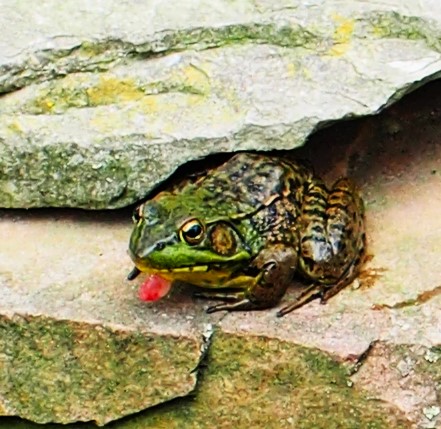
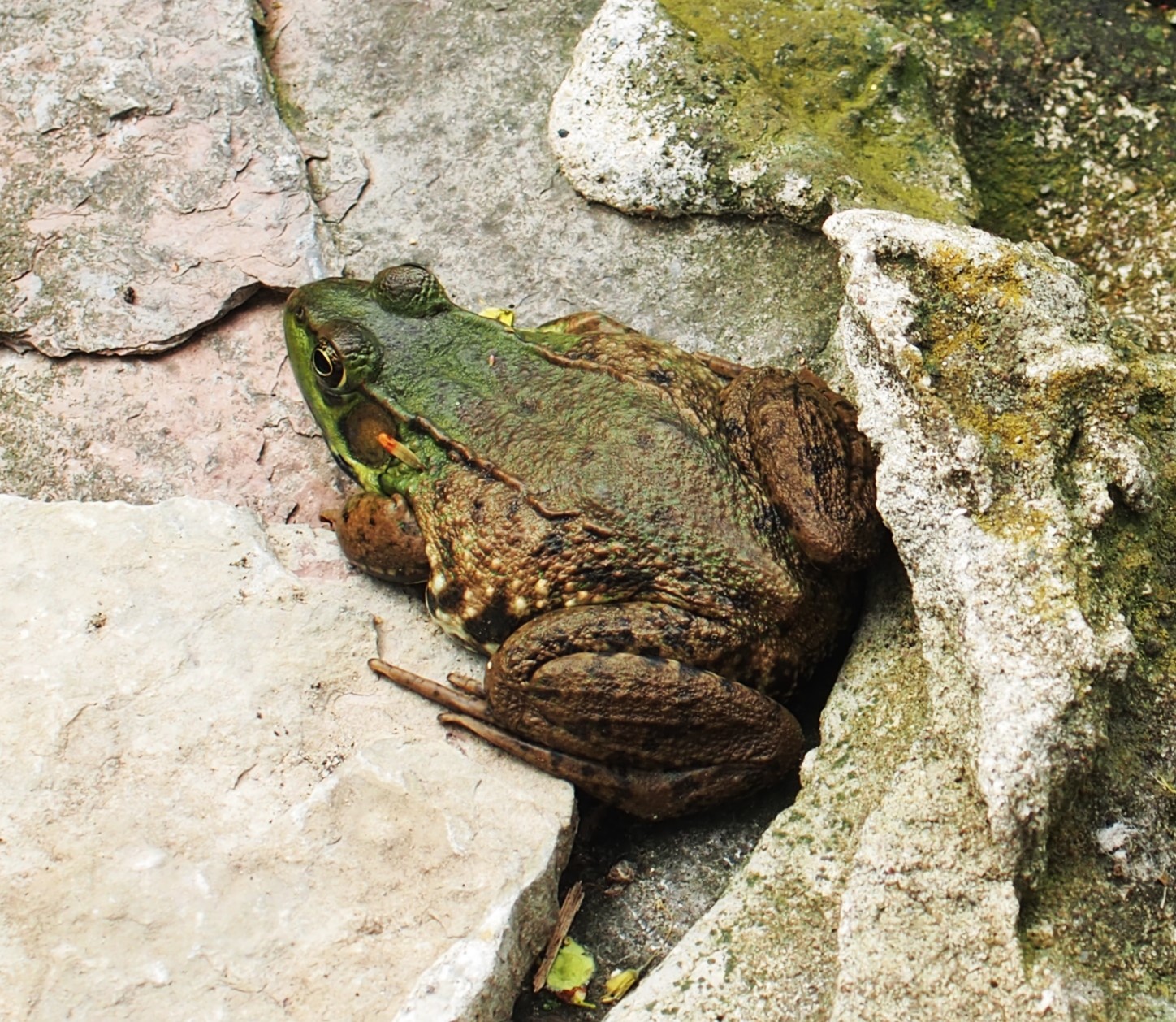
One of the things I enjoy doing is to count the fishes that are not solid blackish or brownish, but have a recognizable color pattern. In this shot, you can see ten of those. In addition, once in a while I can spot the very littlest one. So I have a pretty good idea that we are going into summer with about eleven of the most colorful ones.
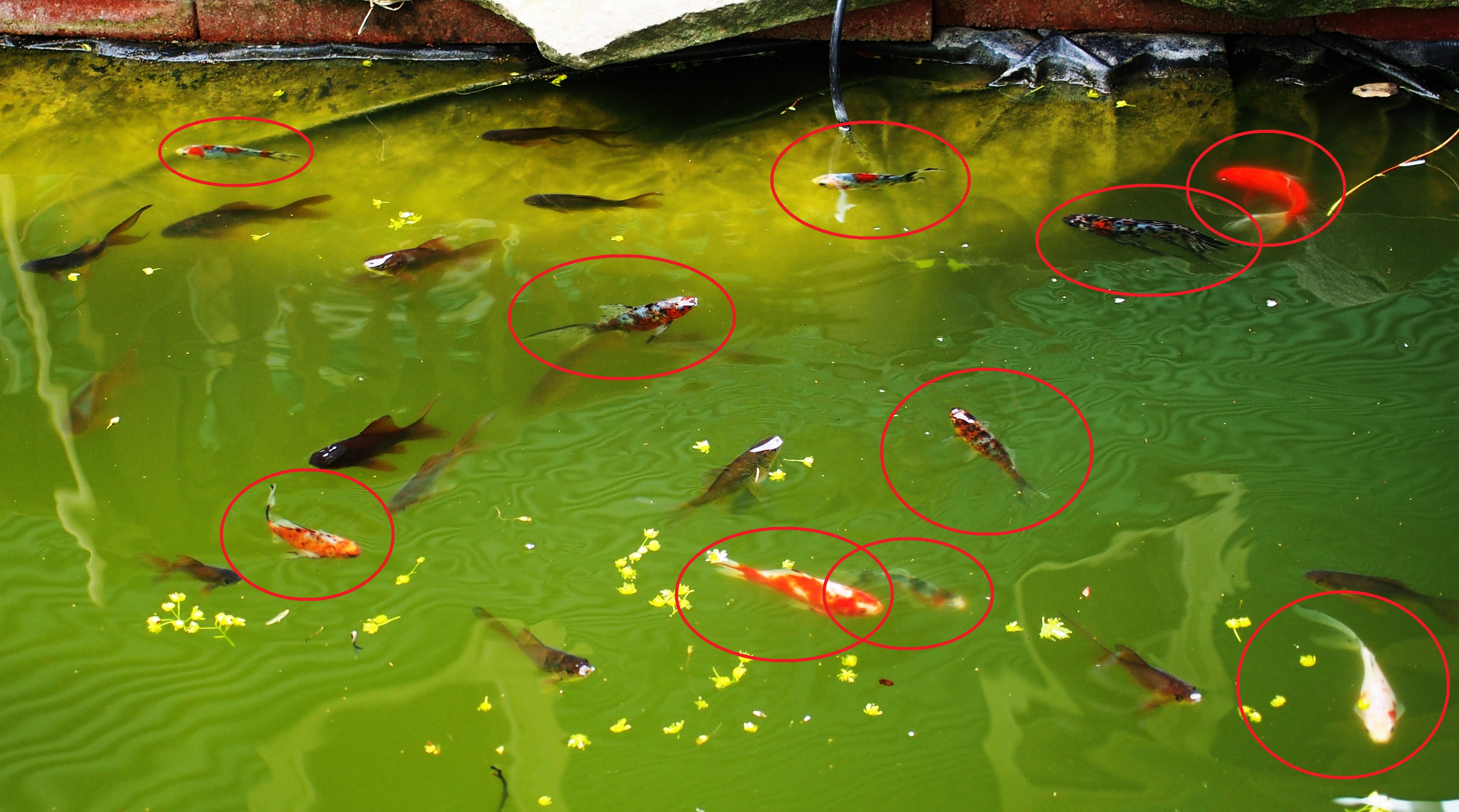
I believe I said it last week! What a week! What a joy to have so much to see and learn. Soon it will be warm and I invite you to come take a look!
Love, Martha
Back to April 16, 2023
Forward to April 30, 2023
Back to main menu
copyright Martha O'Kennon 2023





































 .
.



























.gif)






























